


Overview




Brenner Railway



Munich



Rosenheim



Kufstein



Wörgl



Jenbach



Innsbruck



Brennero



Fortezza



Bressanone















Bolzano

Trento

Rovereto

Verona

Bologna

Railjet 360°

Impressum

Brenner Railway

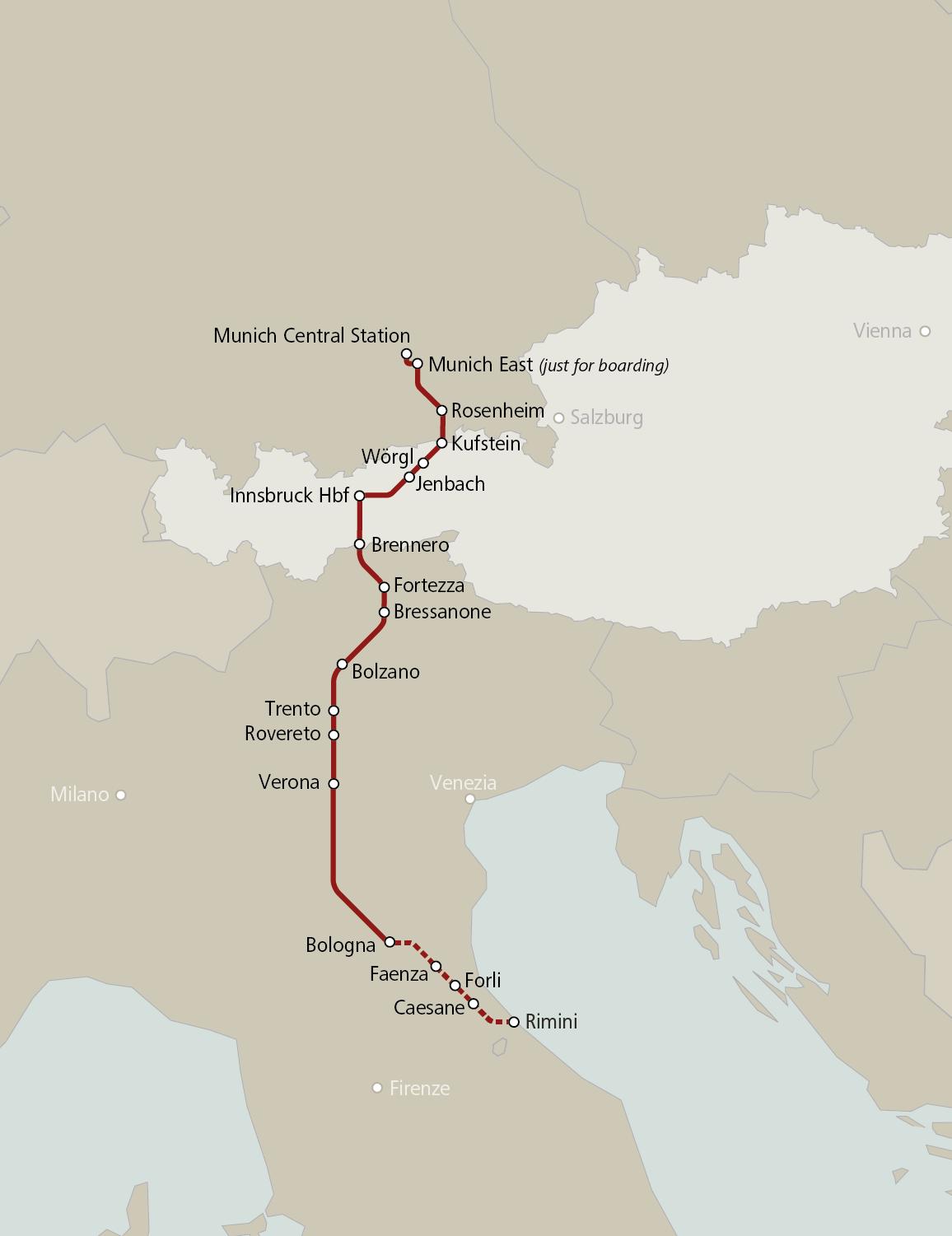

5
Brenner Railway with the ÖBB railjet on the Brenner Railway


Munich
Munich is a vibrant city that combines old and new. Here you will find diversity, joy of life and a warm community of locals. The city of Munich is a wonderful place to relax and explore.
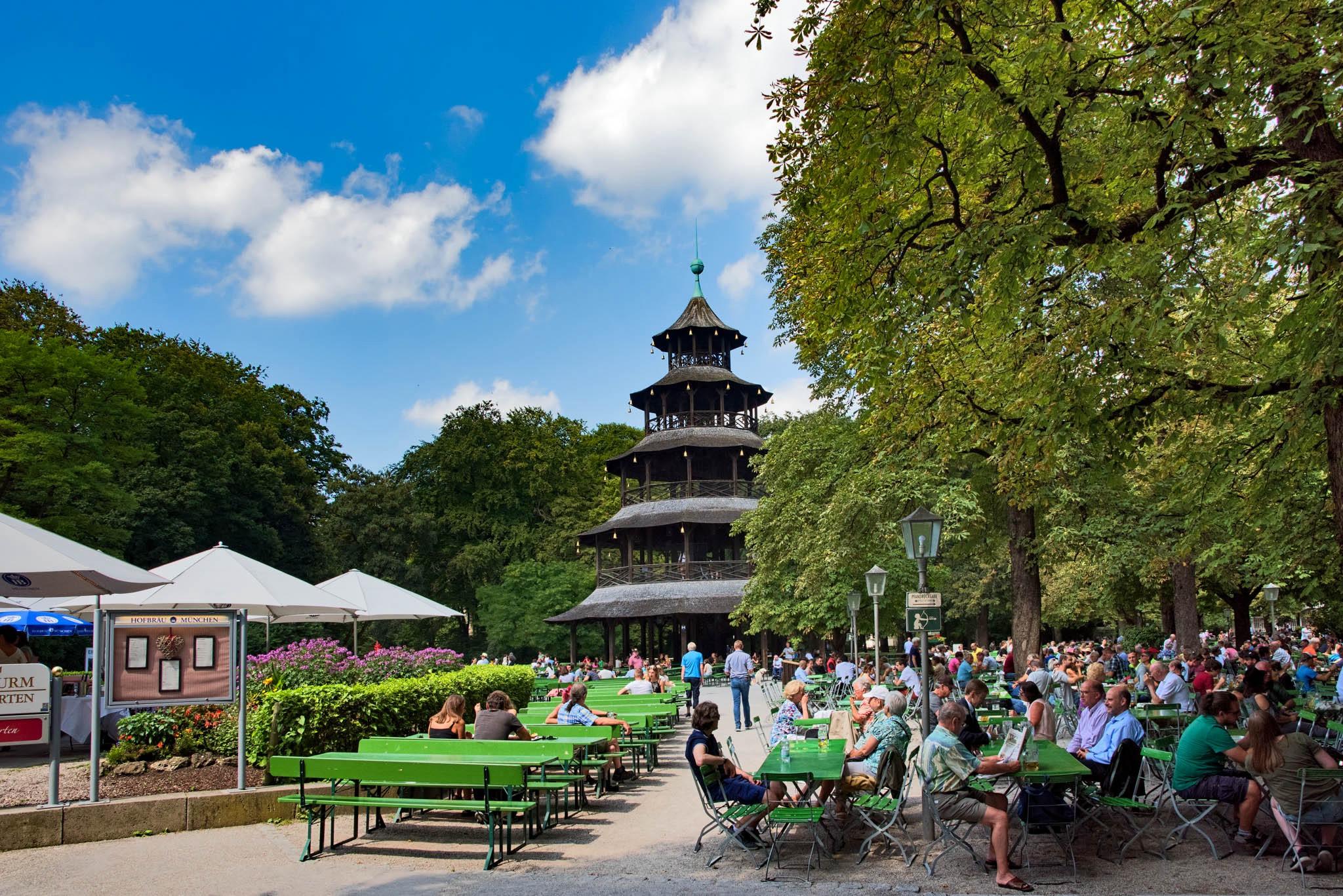


The starting point of the Brenner route is the exciting metropolis on the Isar river. The Bavarian capital impresses visitors with its history, culture and numerous sights. Munich is a perfect travel destination for travelers of all ages. The locals' joy for life is contagious. No matter whether you are visiting the city for the first time or are returning again and again - you will never be bored here because there is always something new and exciting to discover! The city's many parks and green spaces offer a relaxing oasis in the middle of the hustle and bustle of city life.
Here you can escape from everyday life, go for a walk or just enjoy nature.
Especially in summer, the beer gardens around the city are a popular meeting place to celebrate life with a cool drink and Bavarian delicacies. The people of Munich are known for their hospitality and cosiness, which makes a visit to this lively city an unforgettable experience.
with the ÖBB railjet on the Brenner Railway
7



A separate travel guide is available for the city of Munich. As with all ÖBB e-books, there is also an edition for Apple and one in PDF format. Since the introduction of the new Nightjets and Railjets, this travel guide has also been accessible via railnet.
Railnet is the entertainment platform in the new generation of ÖBB Nightjets and on all ÖBB Railjet trains.
on the Brenner Railway 8
with the ÖBB railjet

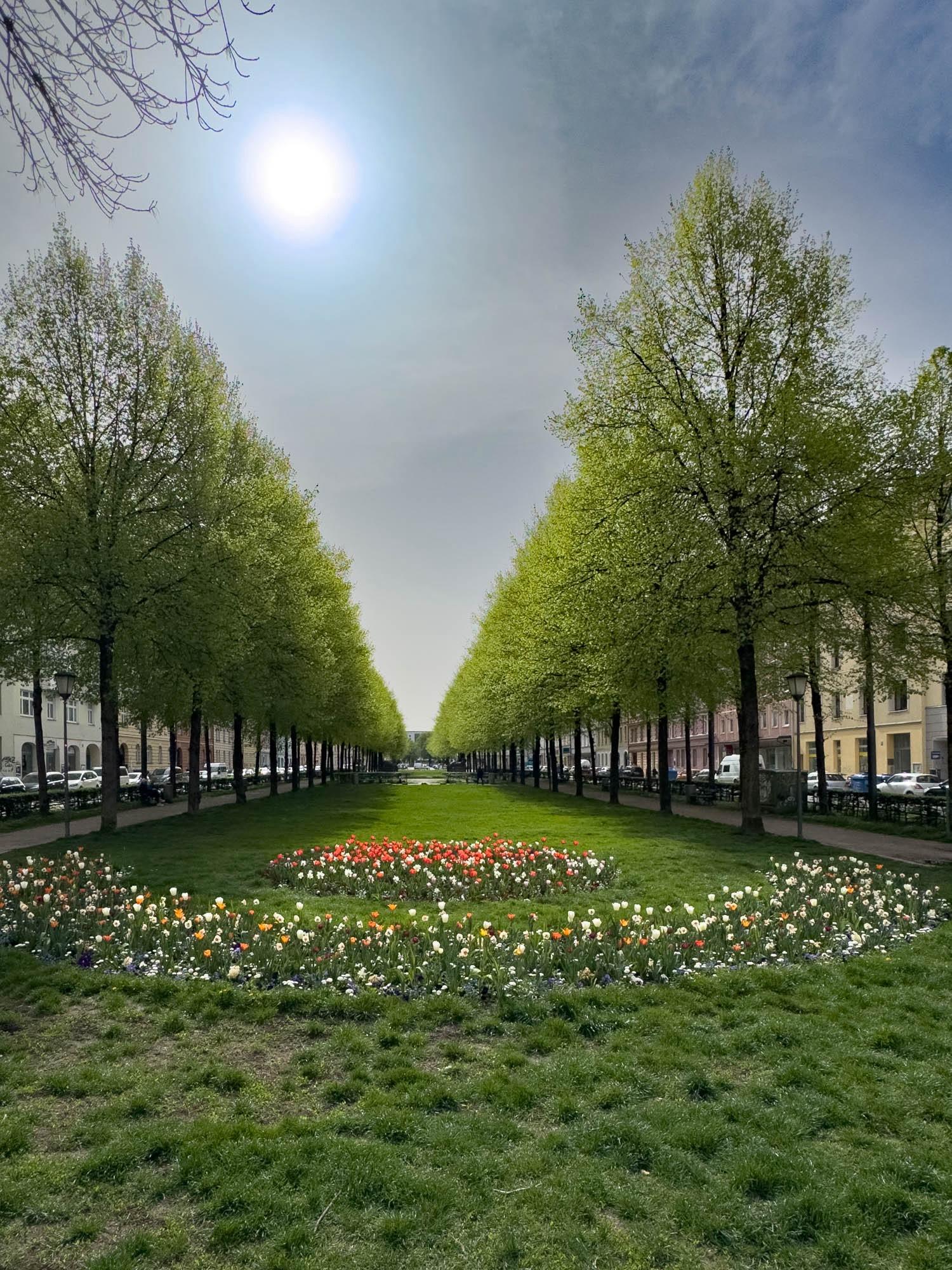


the Brenner
9
Munich East with the ÖBB railjet on
Railway




Marienplatz with the ÖBB railjet on the Brenner Railway 10



Munich's Viktualienmarkt is a food market that is open daily (except Sundays and on public holidays) and has existed since 1807. Over an area of 18,591 square metres, permanently installed stalls with a wide range of offerings build the core of the market. They are supplemented by seasonally rotating stands. The market stalls are arranged around a beer garden and are surrounded by Munich's central maypole and several figurine fountains. The Viktualienmarkt has developed from a farmers' market into a popular shopping spot and meeting point for foodies.
Around 110 traders offer fruits, vegetables, meat, cheese, fish, bread, spices, flowers and much more.
You can spend your lunch break indulging in typical Bavarian fare in the beer garden of Munich's Viktualienmarkt, and of course top it off with a local beer. Take a leisurely break here to recover and recharge after your shopping spree. The market is not only an attraction but also a convenient place for all visitors to enjoy a break in the heart of the city.
with the ÖBB railjet on the Brenner Railway 11
Viktualienmarkt
Munich Residence



From 1508 until 1918, the Munich Residence served as the residence and government seat of the Bavarian dukes, princeelectors and kings. The residence was built from a castle in the northeast of the city fortifications ("Neuveste", 1385). The ruling princes transformed the Residence into a magnificent royal home. The excellent taste in art and high political demands of the House of Wittelsbach gave rise to magnificent rooms and extensive art collections from the Renaissance, early Baroque, Rococo and Classicism.
Today, the Munich Residence, together with the museums of the Bavarian Palace Administration (Residenzmuseum, Treasury, Cuvilliés Theater) and other cultural institutions, form one of the largest museum complexes in Bavaria.
The world-famous collection of jewels, goldsmith's works, enamel, crystal and ivory works in the collection of the Munich Residenz now includes over 1200 individual pieces. It is the result of the Bavarian rulers' centuries-long passion for collecting.
with the ÖBB railjet on the Brenner Railway 12

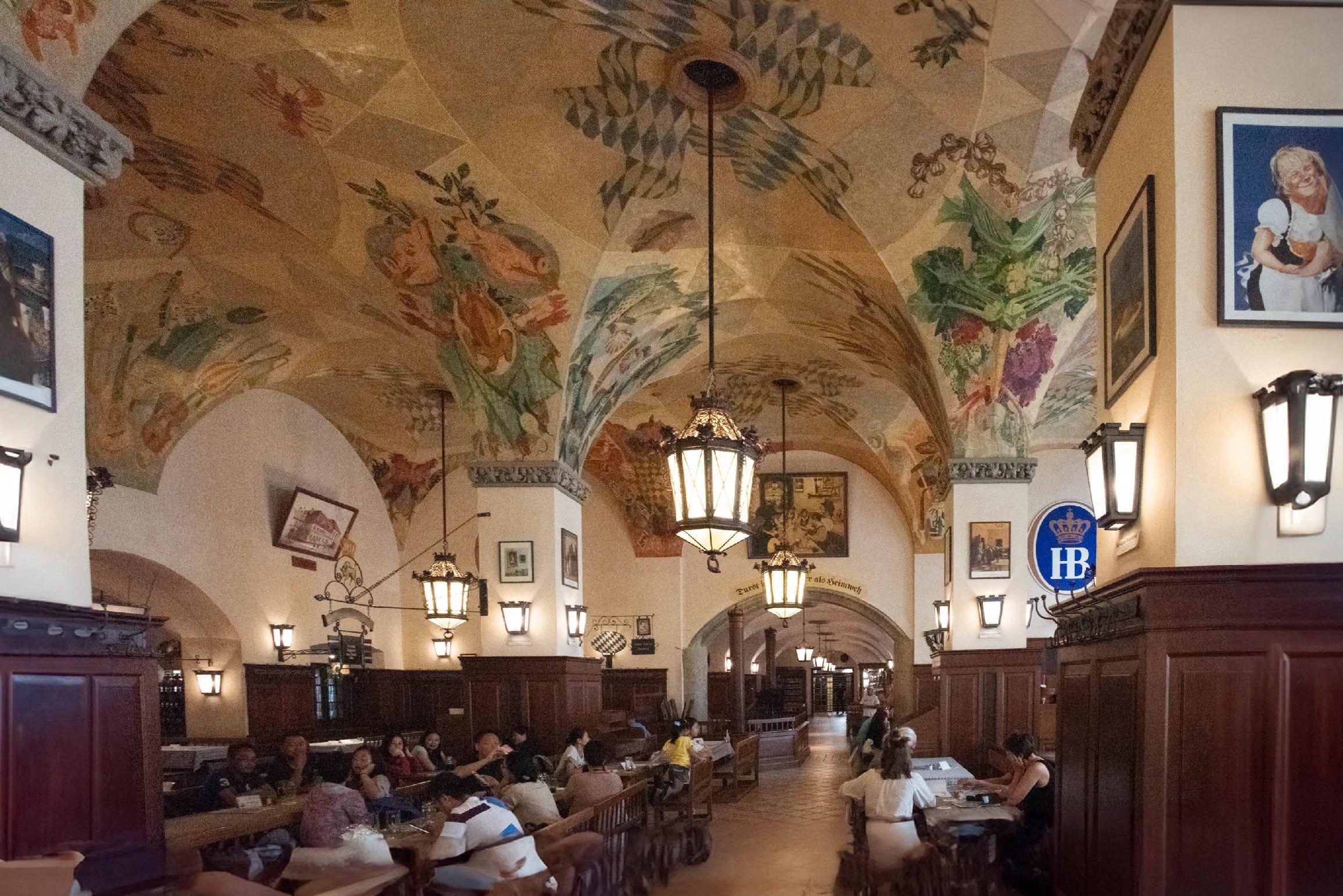


The history of the Munich Hofbräuhaus begins in the year 1589, when the Bavarian Duke Wilhelm V commissioned the construction of the brewery to supply the Wittelsbacher Court.
The most famous part of the Hofbräuhaus is the so-called Schwemme on the ground floor. This is a spacious beer hall with rustic wooden tables that can accommodate around 1,000 people.
Regular guests of the Hofbräuhaus have the opportunity to keep their private beer mugs on the shelves.
On the upper floors there is a ballroom with nine-metre-high vaulted ceilings for around 1,500 people. Other rooms on the upper floors can accommodate more than 1,000 people (the coat of arms hall, the Munich room, the bay window room, the brewery, and the former “drinking room”).
During summer, the inner courtyard with the lion fountain serves as a beer garden. A shop in the entrance area lets visitors browse for souvenirs from Munich and the Hofbräuhaus in particular.
13
Hofbräuhaus with the ÖBB railjet on the Brenner Railway




The imposing Siegestor (Victory Gate) at the beginning of the magnificent Leopoldstrasse in Munich tells of the city's close connection to Italy and symbolises peace.
The triumphal arch together with the Feldherrnhalle at Odeonsplatz were designed by King Ludwig I and his court architect Friedrich von Gärtner, based on the model of the Arch of Constantine in Rome. Both, the Feldherrnhalle and the Siegestor, were built to honor the Bavarian Army.
The connection to Italy was not only reflected in the architecture of the Siegestor, but also in the cultural influence on Munich's society. Many Italian artists and intellectuals settled in Schwabing, which led to a lively cultural exchange in this region. This gave rise to a vibrant artists' quarter that is still known today for its bohemian atmosphere. The proximity to the Siegestor as the entrance to Schwabing also became a symbol of the cosmopolitanism and diversity of Munich's culture.
with the ÖBB
on the Brenner Railway 14
Siegestor
railjet

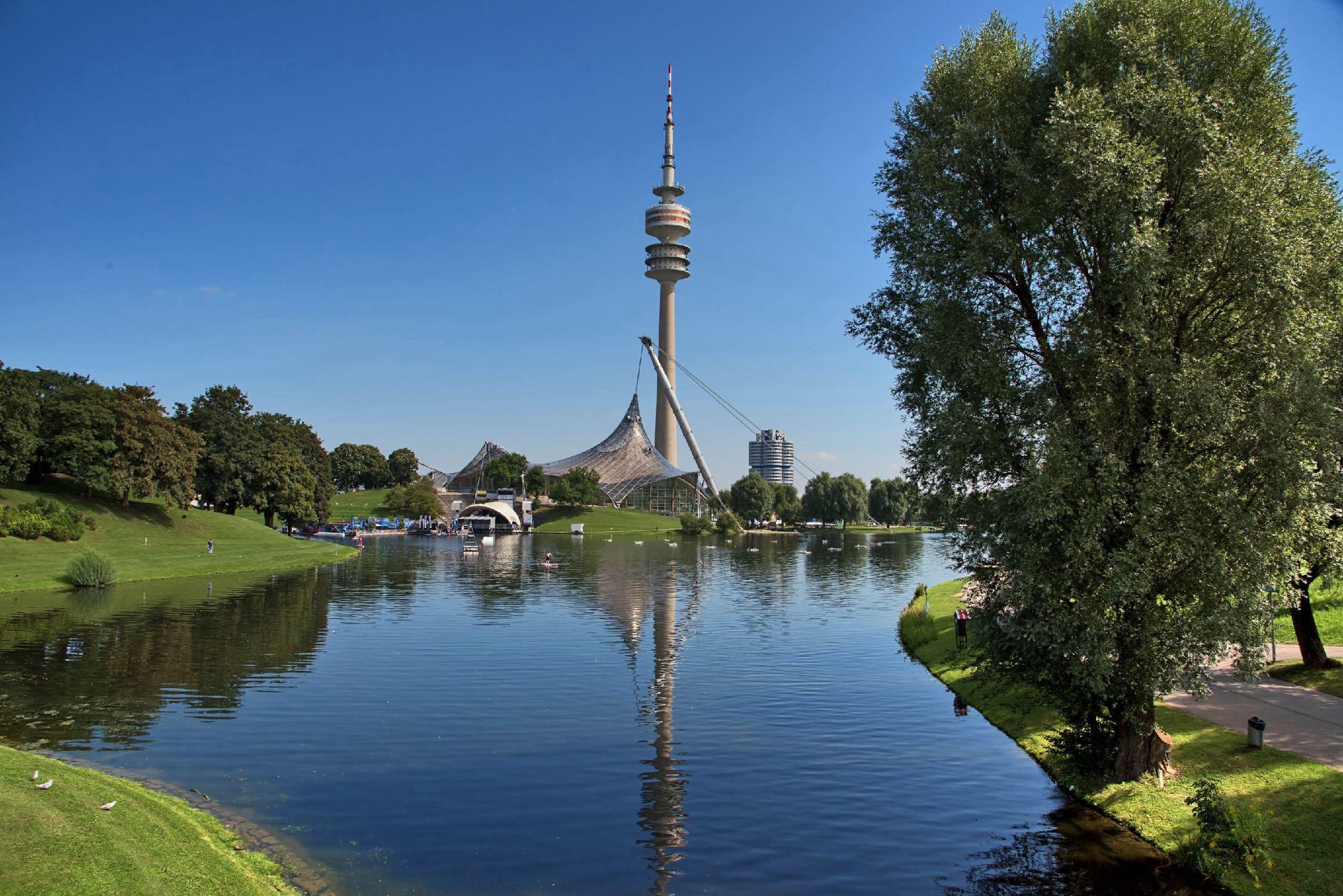


Since the 1972 Olympic Summer Games, over 11,500 events with more than 200 million visitors have taken place in the 85hectare park. Since then, the Olympic Park buildings have been the venue for 31 world championships, 12 European championships and almost 100 German national championships. In addition, numerous other events such as concerts, trade fairs and exhibitions are regularly being held here.
The Olympic Park in Munich has developed into an important cultural centre over the years. In addition to sporting events,
the broad variety of concerts by international artists have also become an established part of the programme. The idyllic location of the park, surrounded by the characteristic tents and the imposing Olympic Tower, creates a unique atmosphere for visitors from all over the world. Open-air events take place during the summer months, where visitors can enjoy the interaction of nature, architecture and the event.
The nearby BMW World is also worth a visit.
the
on the Brenner Railway 15
Olympiapark with
ÖBB railjet
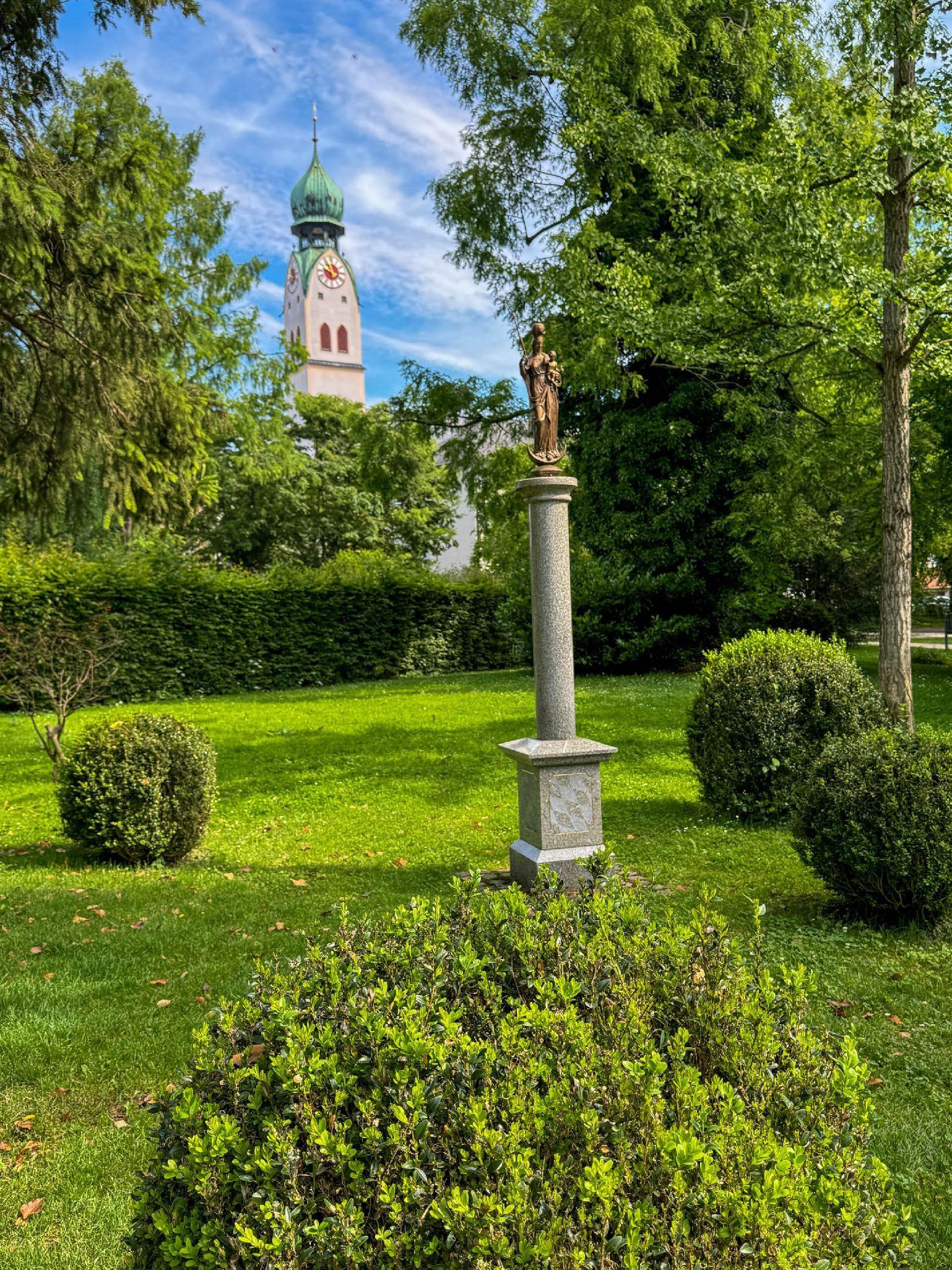
Rosenheim

Rosenheim is often referred to as the northernmost city in Italy. The combination of southern flair and Bavarian cosiness gives the city of Rosenheim its special charm.



The TV series "Rosenheim Cops" has played a major role in making Rosenheim even more famous. Originally, only five to six episodes were planned, but over the past 20 years, more than 500 episodes of the show have been produced. When walking through Rosenheim, you will regularly come across life-sized cutouts of characters from the series that invite you to take a selfie.
The city of Rosenheim combines Bavarian cosiness with Italian charm and invites you to linger. A tour can begin in the "living
room of the city" or with a delicious Weisswurst (white sausage) at the market on Ludwigsplatz. In addition to the numerous sights, Münchener Straße is also an unofficial mall, inviting locals and tourists to a shopping spree. At lunchtime, visitors can enjoy a cold beer and regional specialties in a Bavarian beer garden under large canopy trees.
The green oasis “Riederpark” in the city centre has belonged to the city of Rosenheim since 1925. For anyone interested in art, a visit to the Rosenheim municipal gallery is a must.
with the ÖBB railjet on the Brenner Railway 17



the
18
Max-Josefs-Platz with the ÖBB railjet on
Brenner Railway

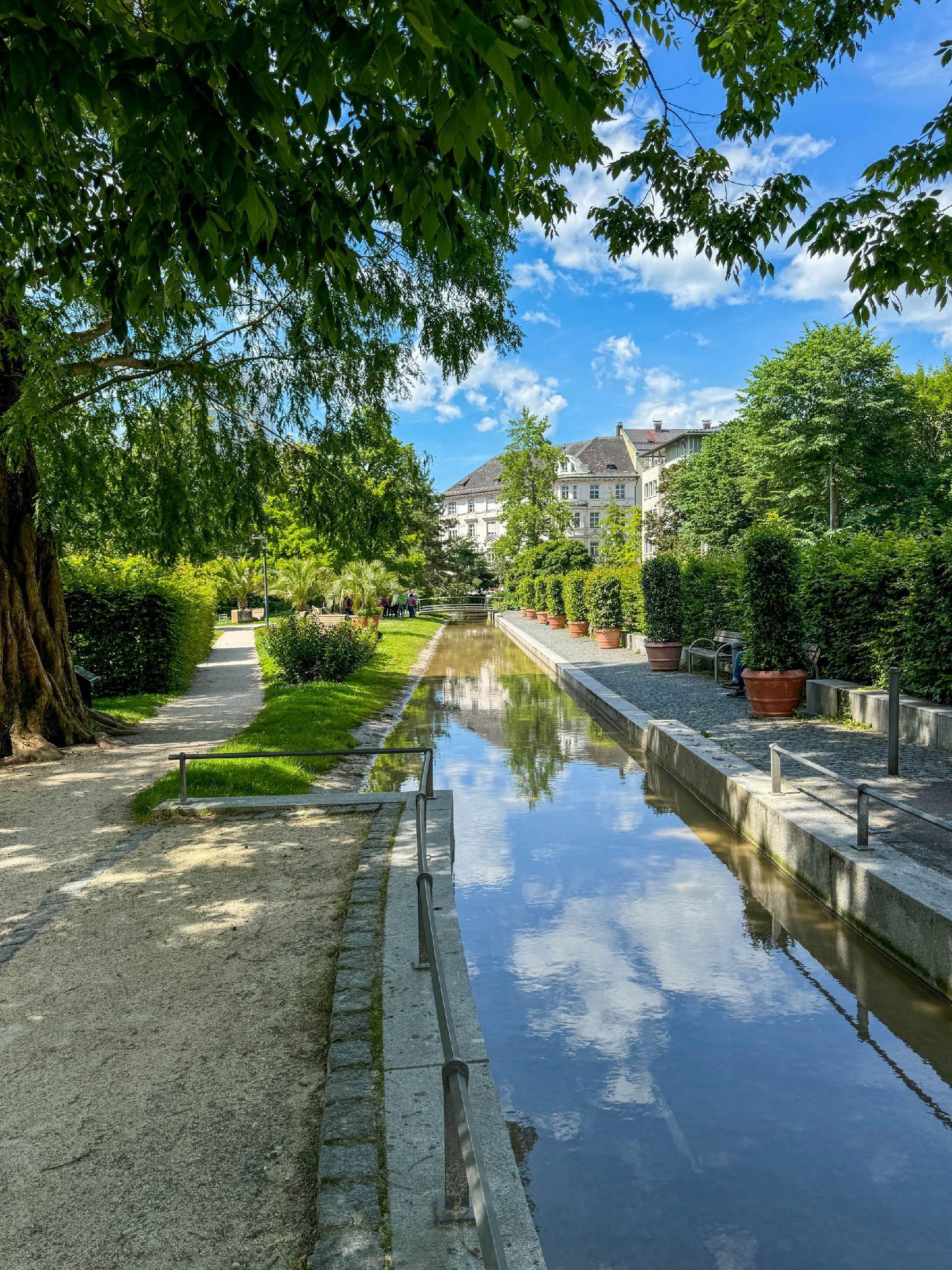


Riedergarten
the
19
with the ÖBB railjet on
Brenner Railway




Lokschuppen
20
with the ÖBB railjet on the Brenner Railway




Mittertor
21
with the ÖBB railjet on the Brenner Railway
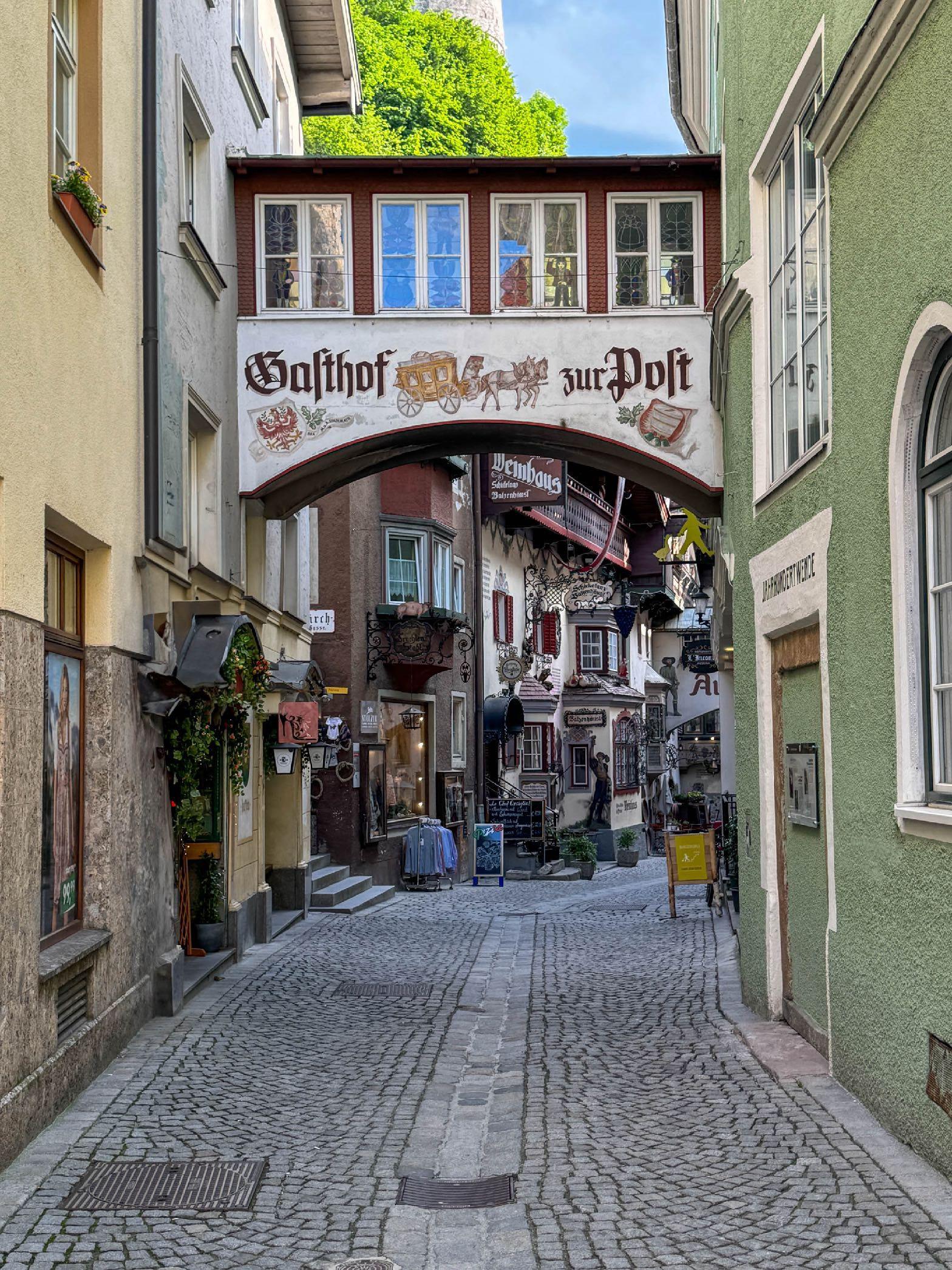
 Kufstein
Kufstein
The impressive medieval fortress towers high above the city. Here you can also listen to the open-air organ every day. Kufstein is home to the world-famous Riedel glassworks.

The second largest city in Tyrol is located on the border to the Free State of Bavaria. Kufstein is characterized by its idyllic location at the foot of the Kaiser Mountains as well as its rich history and culture. The imposing Kufstein Fortress towers over the city and offers an impressive view of the surrounding area. The museum inside the fortress tower gives you the opportunity to learn more about the history of the region.
Thanks to the variety of cultural events, Kufstein is a popular destination for a relaxing weekend. Every year, the largest pop
and rock music festival in western Austria, the Kufstein Unlimited, takes place here. Entry is free and the festival lasts two days. Kufstein's gastronomy is also well-known and offers a variety of restaurants and cafes that serve local specialties as well as international cuisine.
One of the most famous folk songs is about the town of Kufstein. The composer Karl Ganzer composed the song in 1947 about “the pearl of Tyrol” and “the green Inn river”. The Kufstein song has sold more than 100 million copies.
with the ÖBB railjet on the Brenner Railway 23
Kufstein Fortress



24
with the ÖBB railjet on the Brenner Railway




Kaiserlift with the ÖBB railjet on the Brenner Railway 25

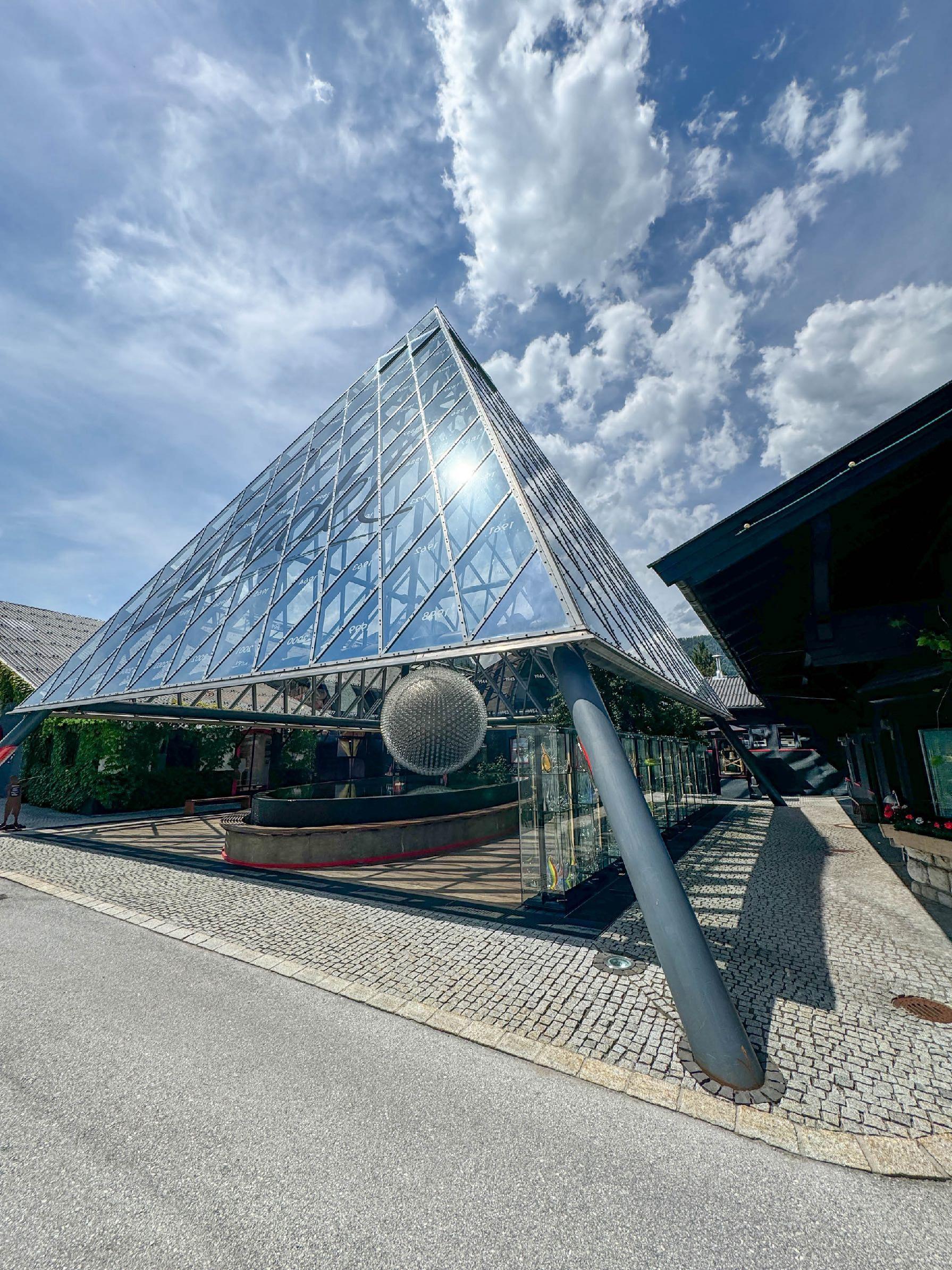


Riedel
Glas
26
with the ÖBB railjet on the Brenner Railway
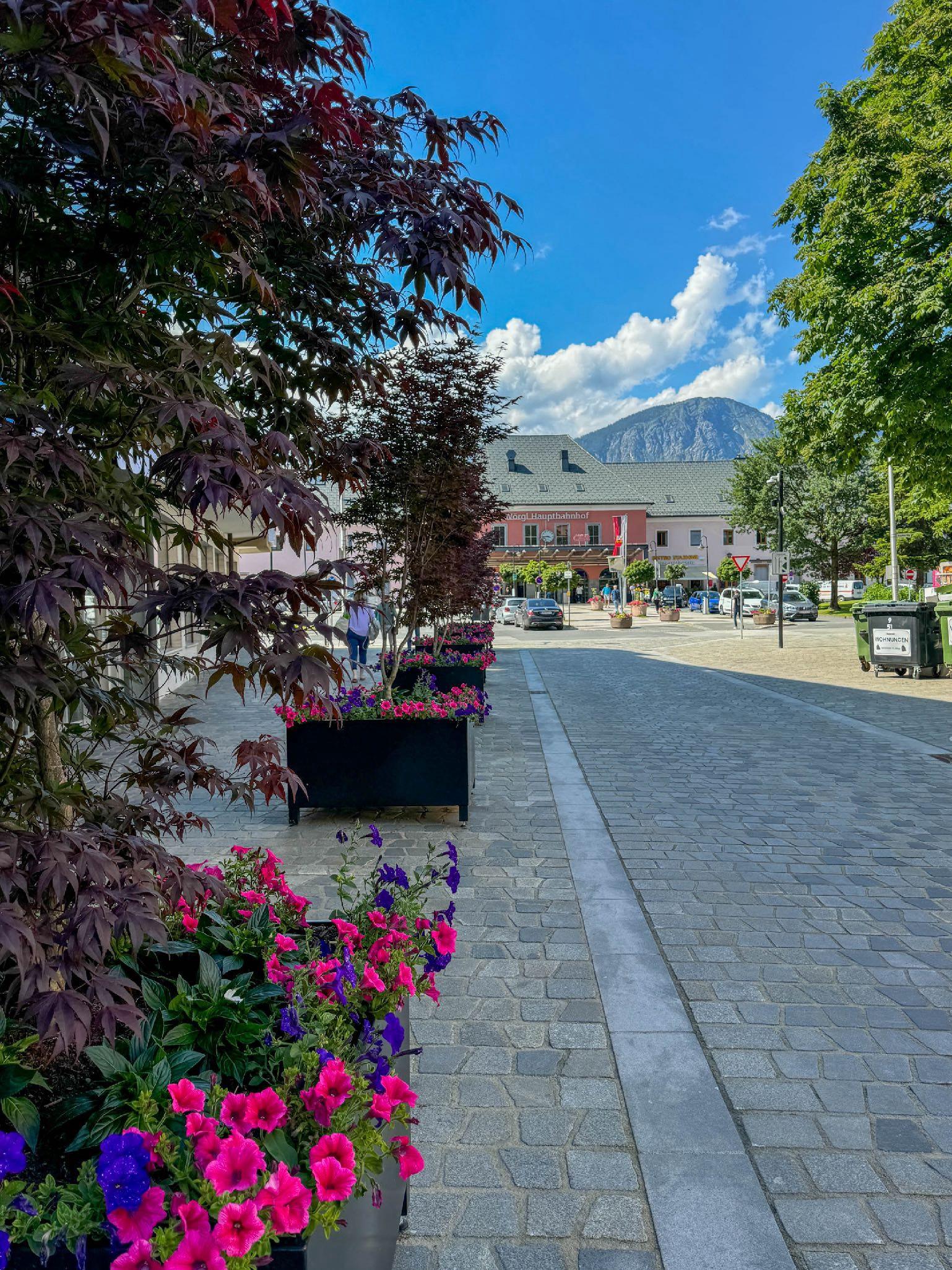
Wörgl

The municipality of Wörgl in Tyrol has almost 15,000 inhabitants and is the fifth largest city in the state. Finds of urn graves that are around 2,500 years old prove a long history of settlement in the region. Wörgl is not only a popular residential area, but also an important transport hub and the shopping centre of the Tyrolean lowlands. Bahnhofstrasse in Wörgl is considered the second longest shopping street in Tyrol.
Thanks to its location, Wörgl is an ideal starting point for trips to the nearby Wildschönau or the Brixental. The town parish
The town of Wörgl combines the best of urban and rural life in a successful way. As an important transport hub, the town is easily accessible. The history of Wörgl dates back to Roman times.
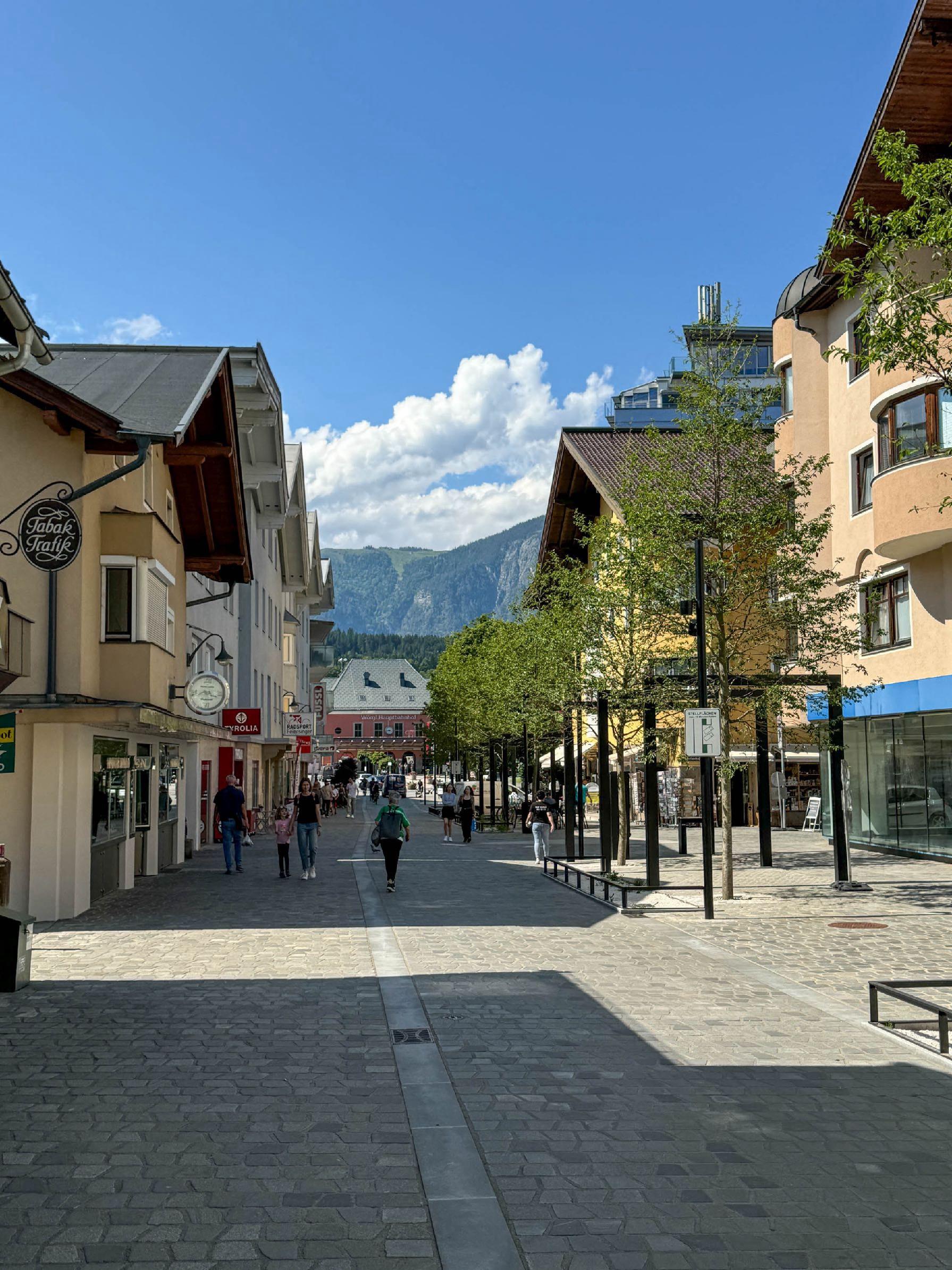
church and the "Wörgl Milestones" in the town itself are also worth seeing.
In June 1932, the Wörgl Free Money Project was launched, which attracted worldwide attention. This experiment, initiated by the then-mayor Unterguggenberger, led to an upturn in the construction industry and a reduction in unemployment by a quarter. In September 1933, however, the project was terminated due to a court ruling.
with the ÖBB railjet on the Brenner Railway 28




Stadtapotheke
ÖBB
on the Brenner
29
with the
railjet
Railway
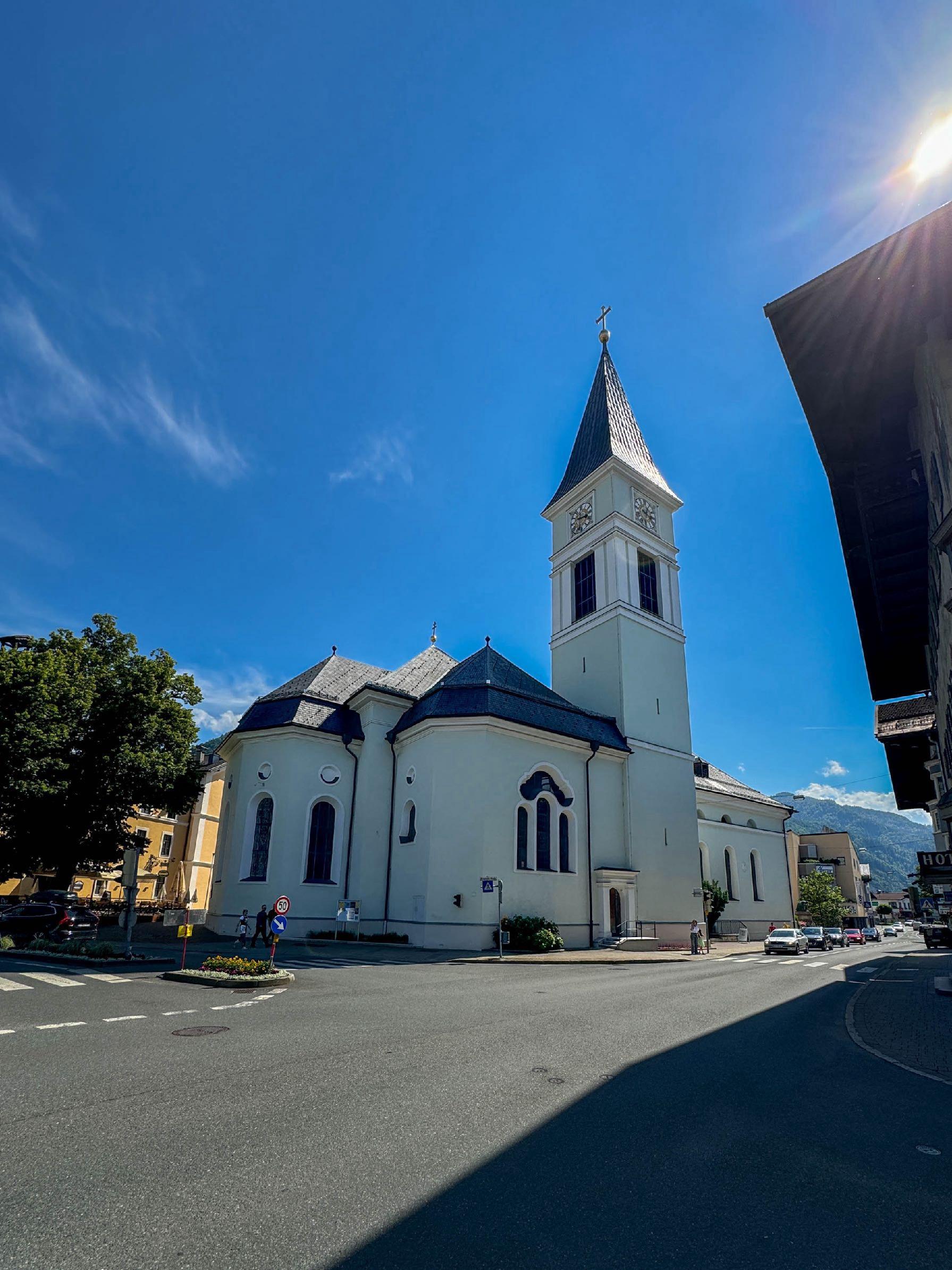


Pfarrkirche Wörgl
30
with the ÖBB railjet on the Brenner Railway

Jenbach

The unique nature, fascinating history and special geographical location of the Silver Region Karwendel make the town of Jenbach a fantastic Tyrolean travel destination all year round.

Jenbach is not only characterized by its unique geographical location, but this town plays an important role as a transport hub.
The train station of the town of Jenbach acts as a hub for mobility, where all express trains stop. This means you can get to the Silver Region quickly and easily. The Silver Region offers numerous options for active visitors. There are family-friendly destinations such as the Risstal with the oldest alpine village in Europe - the Engalm - and a show dairy. But enthusiastic moun-
taineers will also get their money's worth. They can look forward to challenging hikes on the Loassattel, the hiking trails of the Kellerjoch panoramic mountain and on the Gilfert. Cyclists and mountain bikers can look forward to relaxed cycling tours either alone or with the whole family. Culture lovers will also not feel left out in the region.
There are regular connections from Jenbach to the Zillertal and Achensee.
with the ÖBB railjet on the Brenner Railway 32

Achensee Steam Cog Railway
33
with the ÖBB railjet on the Brenner Railway
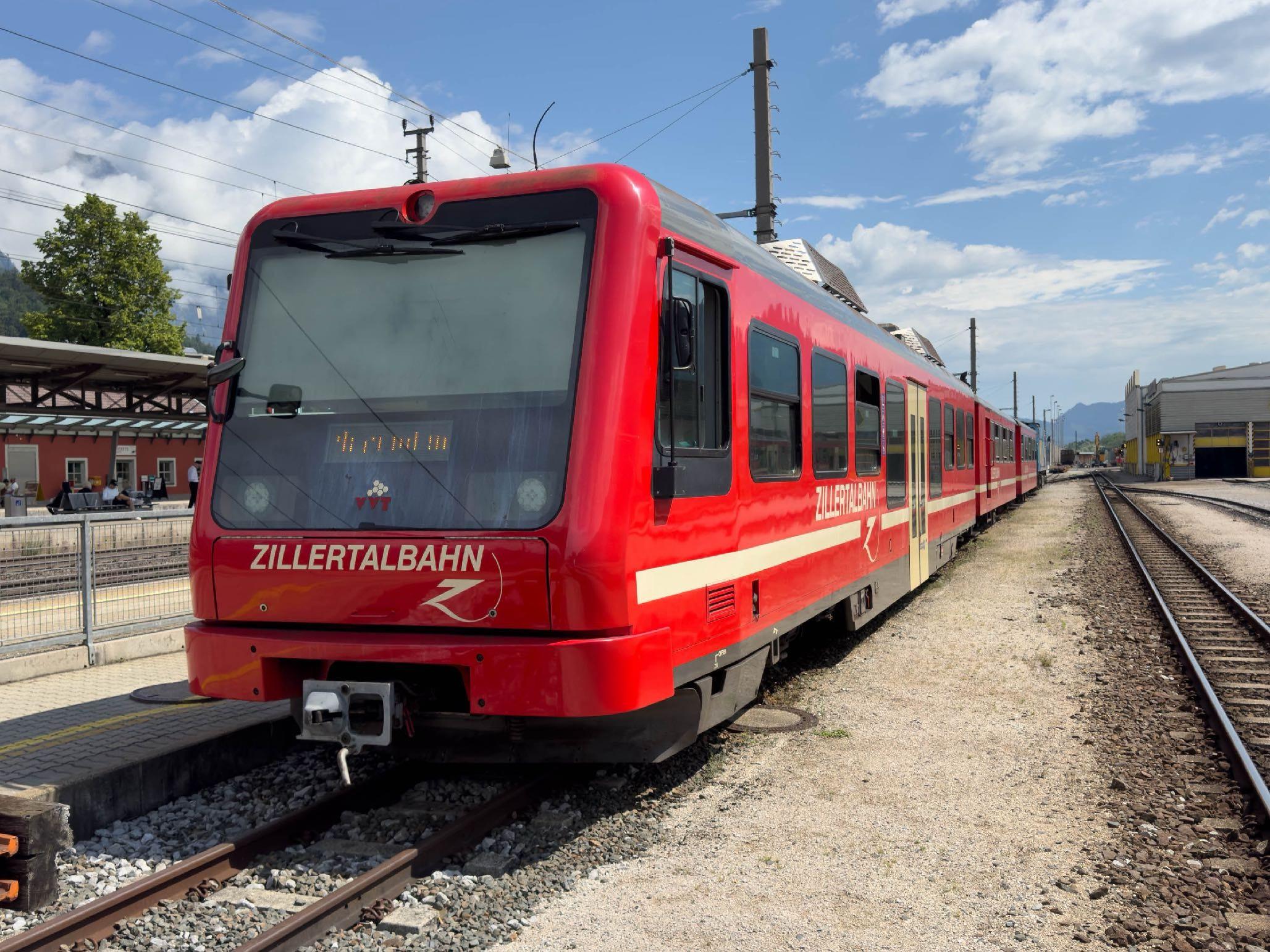
The Zillertal Railway is a narrow-gauge railway with the so-called “Bosnian” gauge of 760mm. The route runs from Jenbach for almost 32km to Mayrhofen in the Zillertal and was opened in the year 1902.
The majority of the shares belong to the Zillertal communities, which is why they are proud of "their" railway. The route stretches over 32km, partly double-track, with a total of 35 bridges and passes well-known tourist destinations.
Zillertal Railway

Nowadays, in addition to the historic trains that are used for special occasions, numerous modern trains run on this route. The Zillertal Railway also plays an important role in freight transportation.
The Zillertaler transport companies also operate several regional bus lines in the Zillertal area. The steam trains reach a maximum speed of 35 km/h.
34
with the ÖBB railjet on the Brenner Railway

Innsbruck

Innsbruck offers all the advantages of a large city. Yet everything is so close that it takes less than 15 minutes to take the tram into the forest or the cable car into the high mountains.
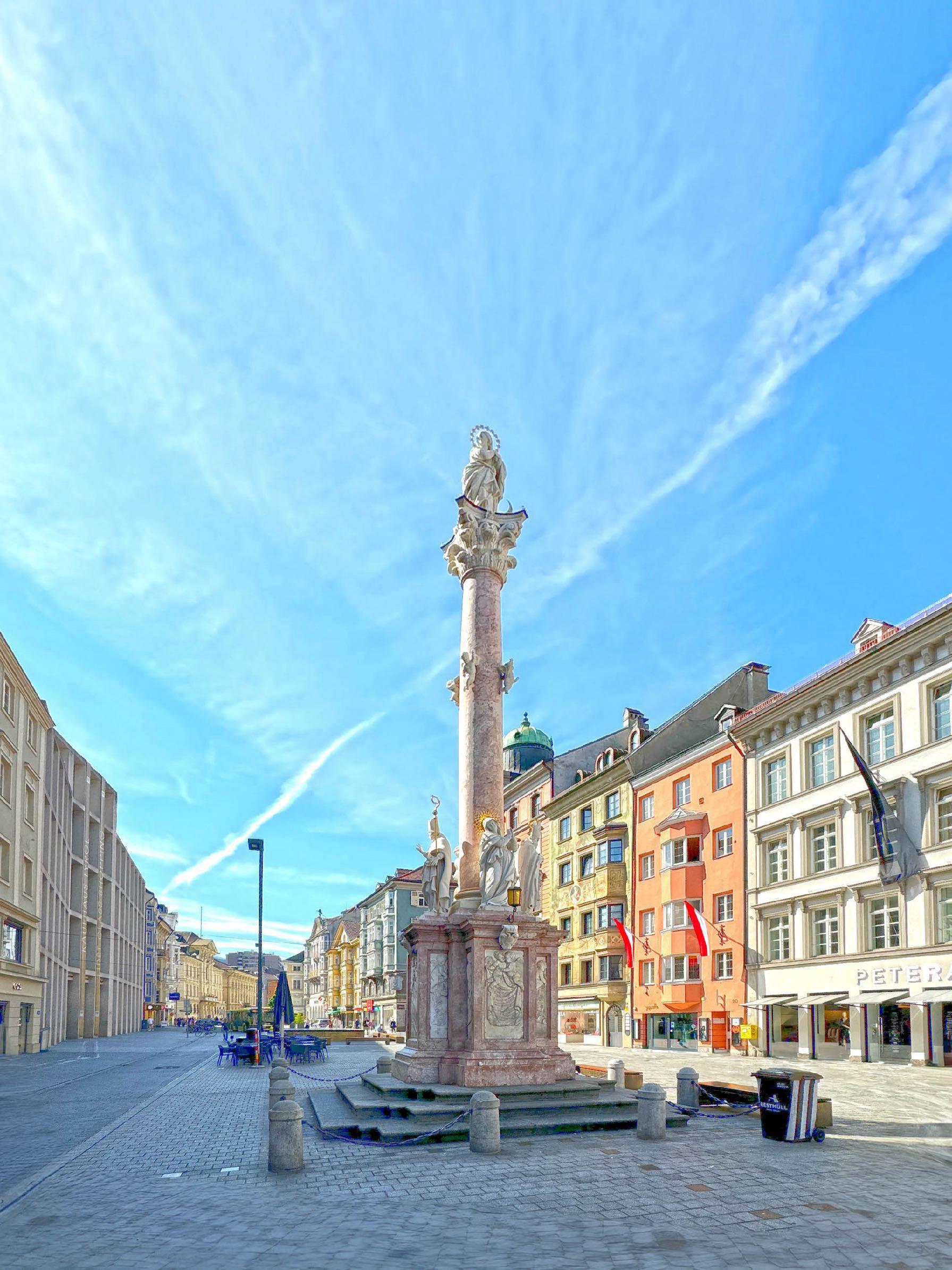


The capital city of the state of Tyrol is picturesquely nestled in the Alps. Innsbruck offers numerous opportunities for sporting activities in both summer and winter. From easy hiking trails to challenging tours, the city and its surroundings offer everything your heart desires.
With the Nordkette cable car, it is even possible to reach an altitude of 2,000 metres from the city center in just 30 minutes. In addition to the mountains, the sights also make Innsbruck a special travel destination. The Imperial Hofburg, built under
Emperor Maximilian I around the year 1500, still impresses visitors today. It was later modernized by Maria Theresa. In the Hofkirche, also known as the "Schwarz Mander Church," 28 life-sized figures guard the tomb of Emperor Maximilian. The famous "Silver Chapel" is also located here.
The “Golden Roof” is one of the city’s landmarks. In the Alpine Zoo, which can be reached by the Hungerburgbahn, you can admire over 2,000 animals.
with the ÖBB railjet on the Brenner Railway 36



A separate travel guide is available for the city of Innsbruck (in german). As with all ÖBB e-books, there is also an edition for Apple and one in PDF format. Since the introduction of the new Nightjets and Railjets, this travel guide has also been accessible via railnet.
Railnet is the entertainment platform in the new generation of ÖBB Nightjets and on all ÖBB Railjet trains.
on the Brenner Railway 37
with the ÖBB railjet
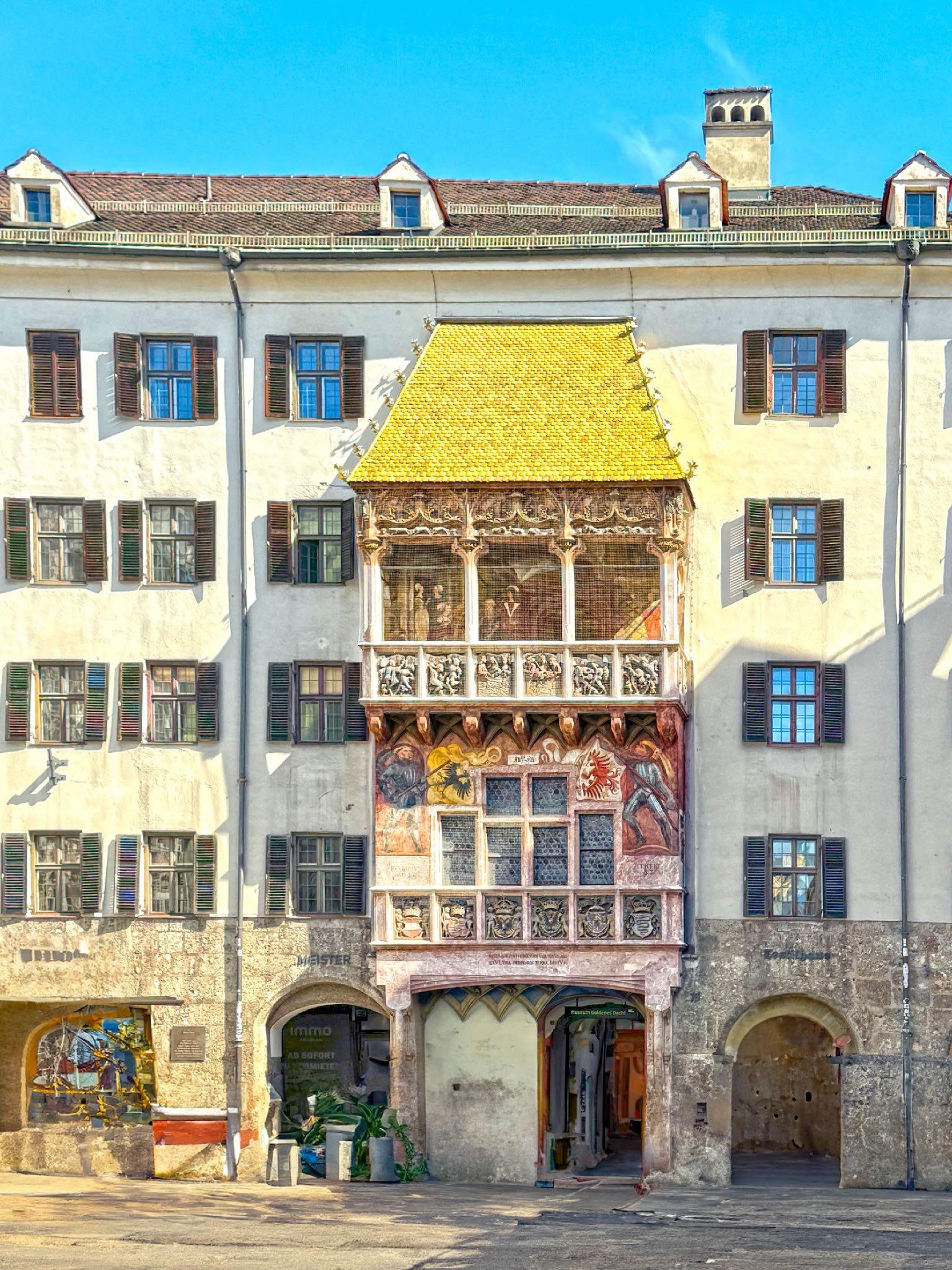


late Gothic style at the Neuer Hof in Herzog-Friedrich-Straße in Innsbruck's old town. The imposing building is the most famous landmark of Innsbruck. The 2,657 fire-gilded copper shingles shine in the sunlight and testify to the city's wealth.
Emperor Maximilian I commissioned the construction of the Golden Roof between 1497 and 1500. Nikolaus Türing the Elder is considered the architect, while Jörg Kölderer, the court painter of Emperor Maximilian I, was responsible for the fres-
Golden Roof

ligree Gothic ornaments gives it an almost fairytale-like aura. The eighteen artfully carved sandstone reliefs mark the transition from the late Gothic to the early Renaissance and are considered to be important Tyrolean works of art due to their excllent quality and beautiful motifs. In order to protect them, they were replaced by copies in 1952. Six original reliefs have been completely restored and can now be admired in the museum.
with the ÖBB railjet on the Brenner Railway 38




The Hofkirche of the Roman Catholic Church is located in the heart of Innsbruck. It is also known as the Franciscan Church or Schwarzmander Church. It was built between the years 1553 and 1563 as the resting place for the tomb of Emperor Maximilian I. However, the monarch was actually buried in the castle of Wiener Neustadt in 1519.
The centre of the church is dominated by the empty tomb of Emperor Maximilian I, around which 28 life-size bronze figures (black men) are grouped.
The freedom fighter Andreas Hofer has been resting in the Hofkirche since 1823.
The "Silver Chapel" is located on the floor above the church and above the former city moat. Archduke Ferdinand II had it built between the years 1577 and 1578 for himself and his wife Philippine Welser and expanded it in 1587. The chapel, named after the "Silver Altar" with a silver Madonna and her symbols, consists of two rooms separated by a grille.
with the ÖBB railjet on the Brenner Railway 39
Hofkirche
Innsbruck mountain railways
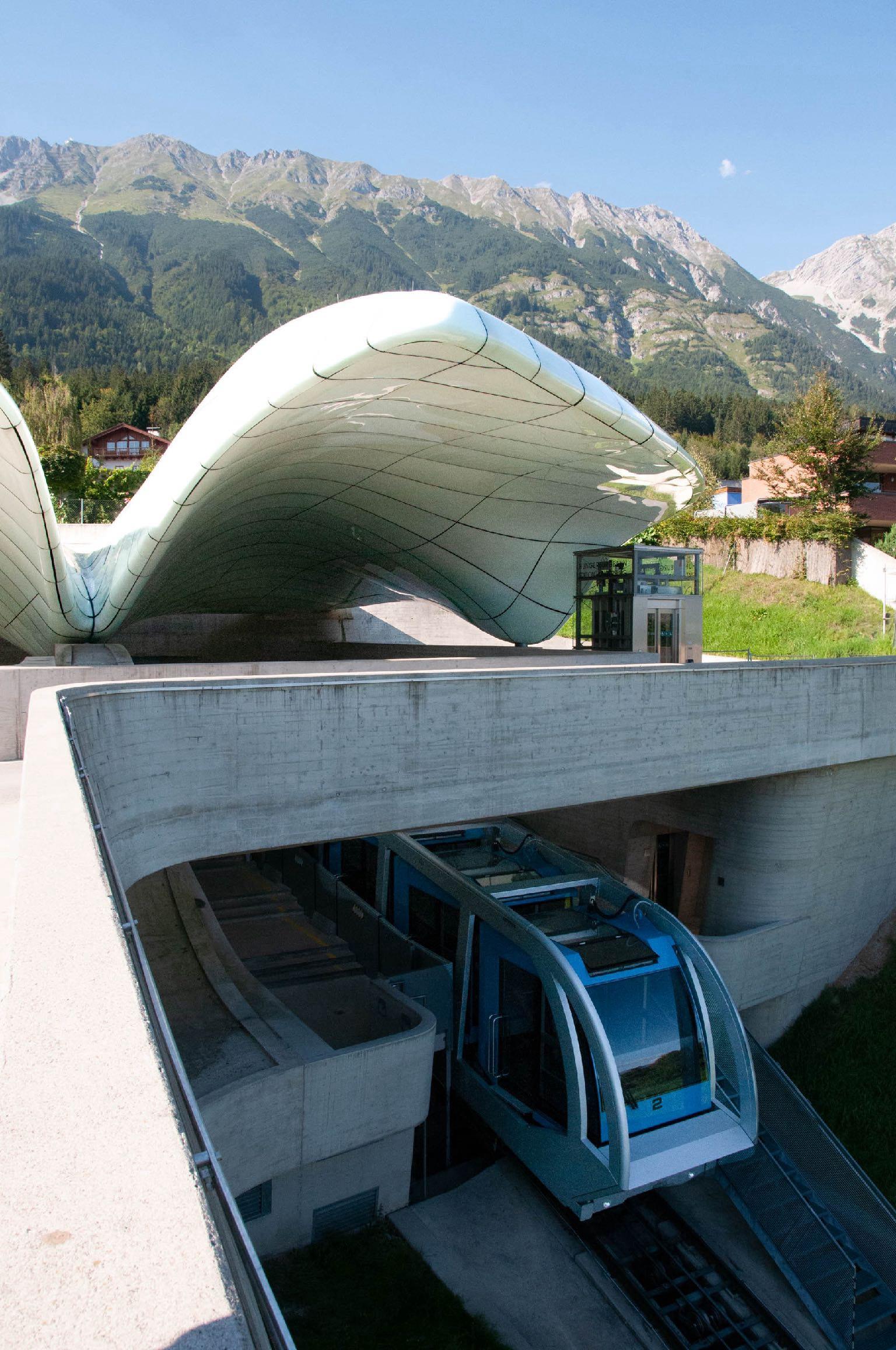


Platz. The valley station of the Seegrubenbahn is in Hungerburg. On the Seegrube, the "Seegrube by Don" restaurant,
Hafelekar. The Innsbruck Nordketten Bahnen offer a selection of combination tickets for visitors.
with the ÖBB railjet on the Brenner Railway
40
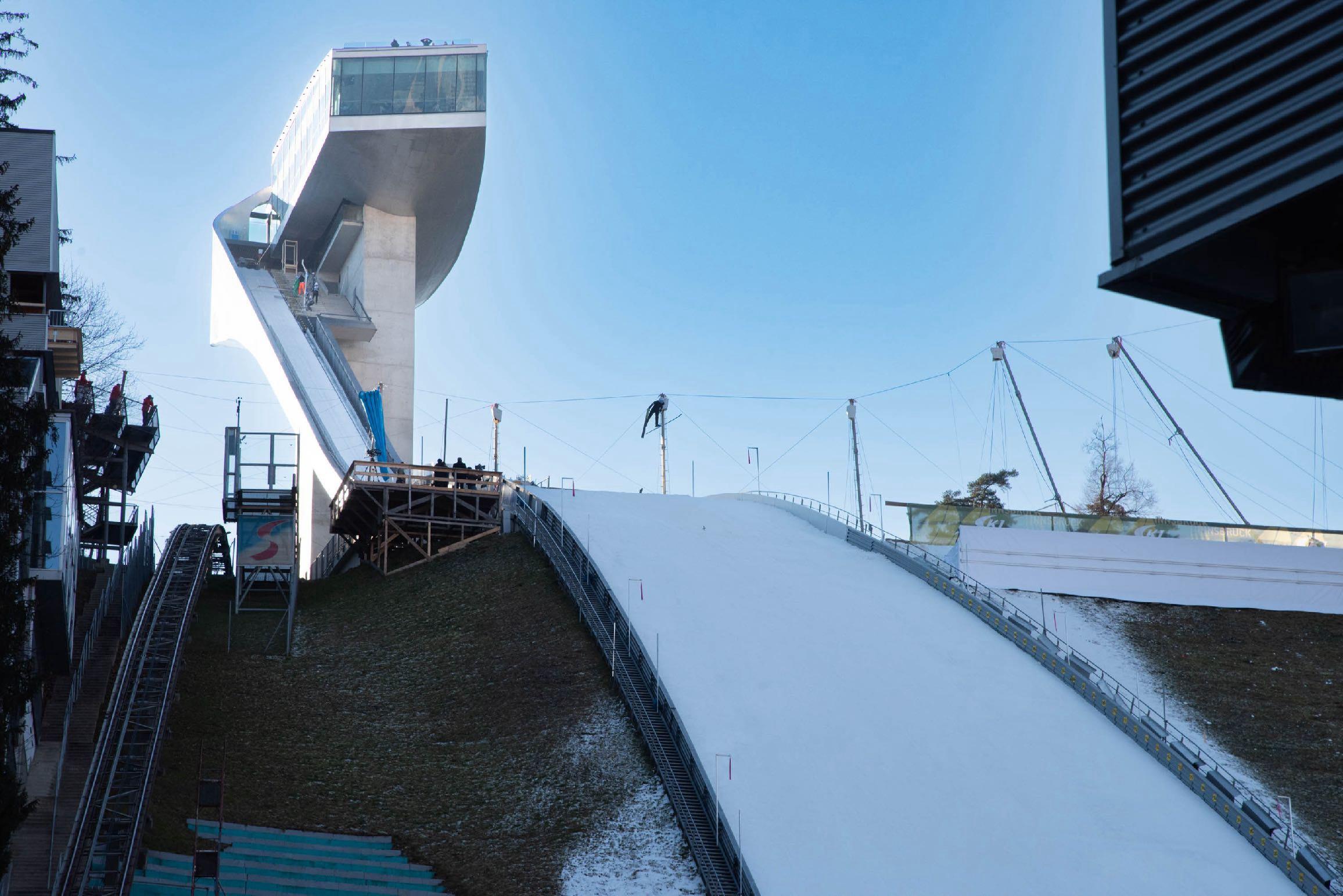


The Bergisel is not only worth a visit because of its striking ski jump, there is a lot more to discover here. Since the year 1817, the Bergisel plateau has been used by the Kaiserjäger soldiers for military exercises and was gradually developed into a "Heroes' Mountain". The Andreas Hofer Memorial is also located there. The Regimental Museum of the Tyrolean Kaiserjäger is worth a visit.
If you are already on the Bergisel, you should definitely visit the Tirol Panorama. The giant panorama painting of the Battle of
Bergisel

the Bergisel has been delighting visitors since 1896. In the year 2010, the 1.000m² and 360° painting was moved to the newly built museum.
The Bergisel ski jump is visible from Innsbruck's main train station. The concrete ski jump was built for the 1964 Olympic Games and was also the venue for the 1976 Olympics. The new ski jump, designed by the architect Zaha Hadid, was opened in the year 2002. The "Bergisel Sky" restaurant serves food and drinks as well as an impressive view.
with the ÖBB railjet on the Brenner Railway 41
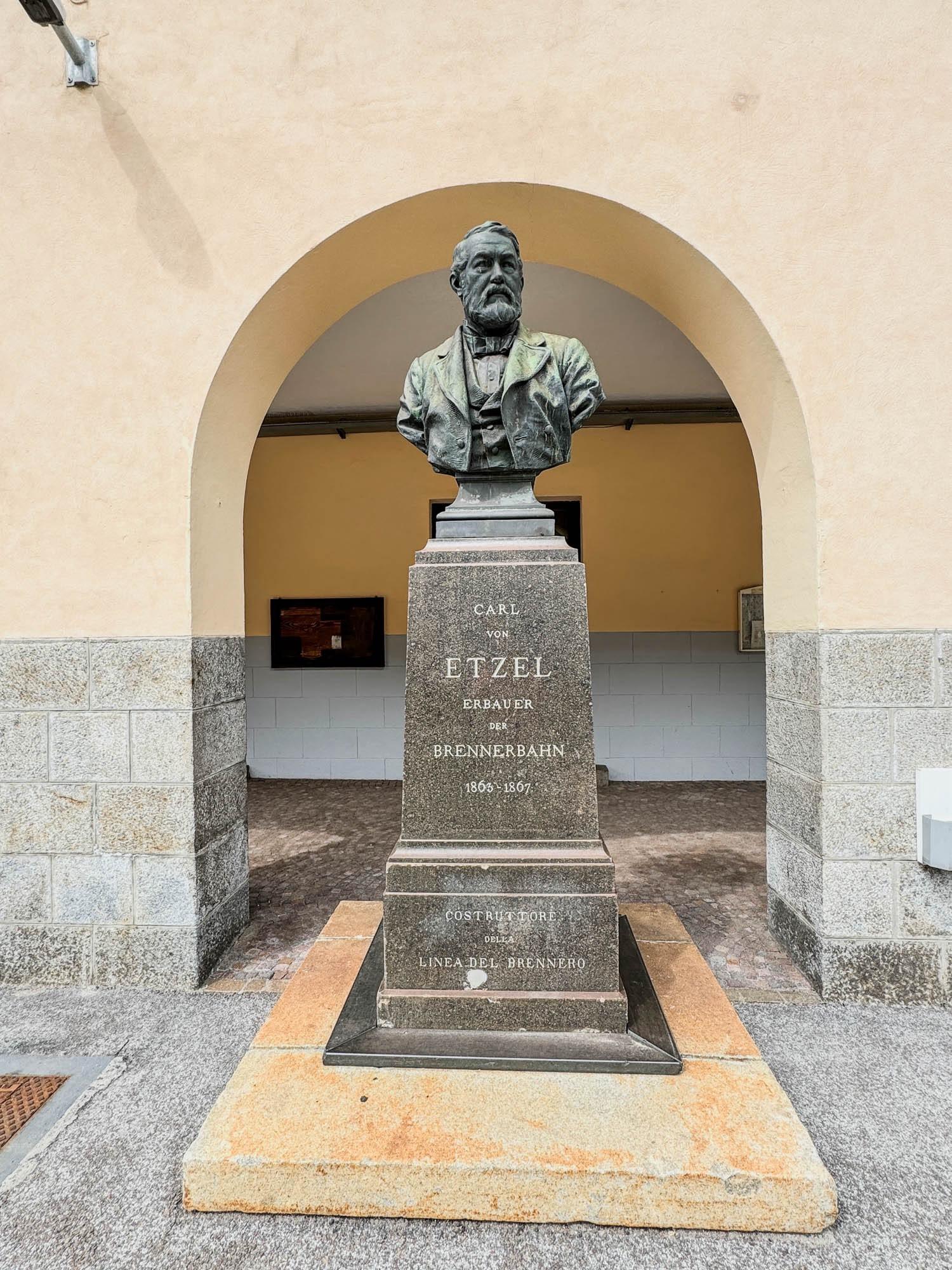
Brennero

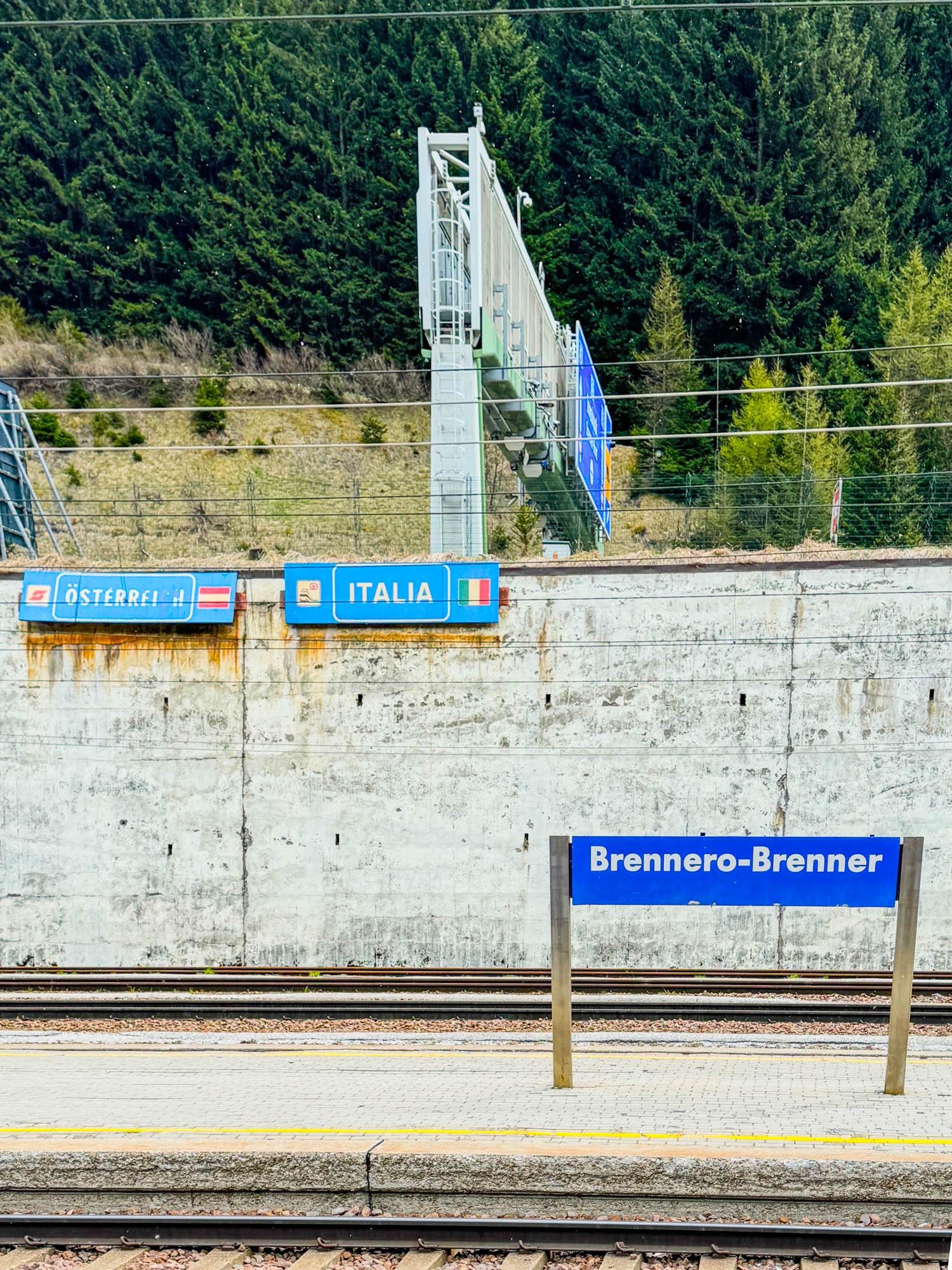
The railway line from the city of Innsbruck over the Brenner Pass and Bolzano to Verona is called the Brenner Railway. Together with the DB, the OBB trains run from Munich to Bologna.
with the ÖBB railjet on the Brenner Railway 43
OUTLET
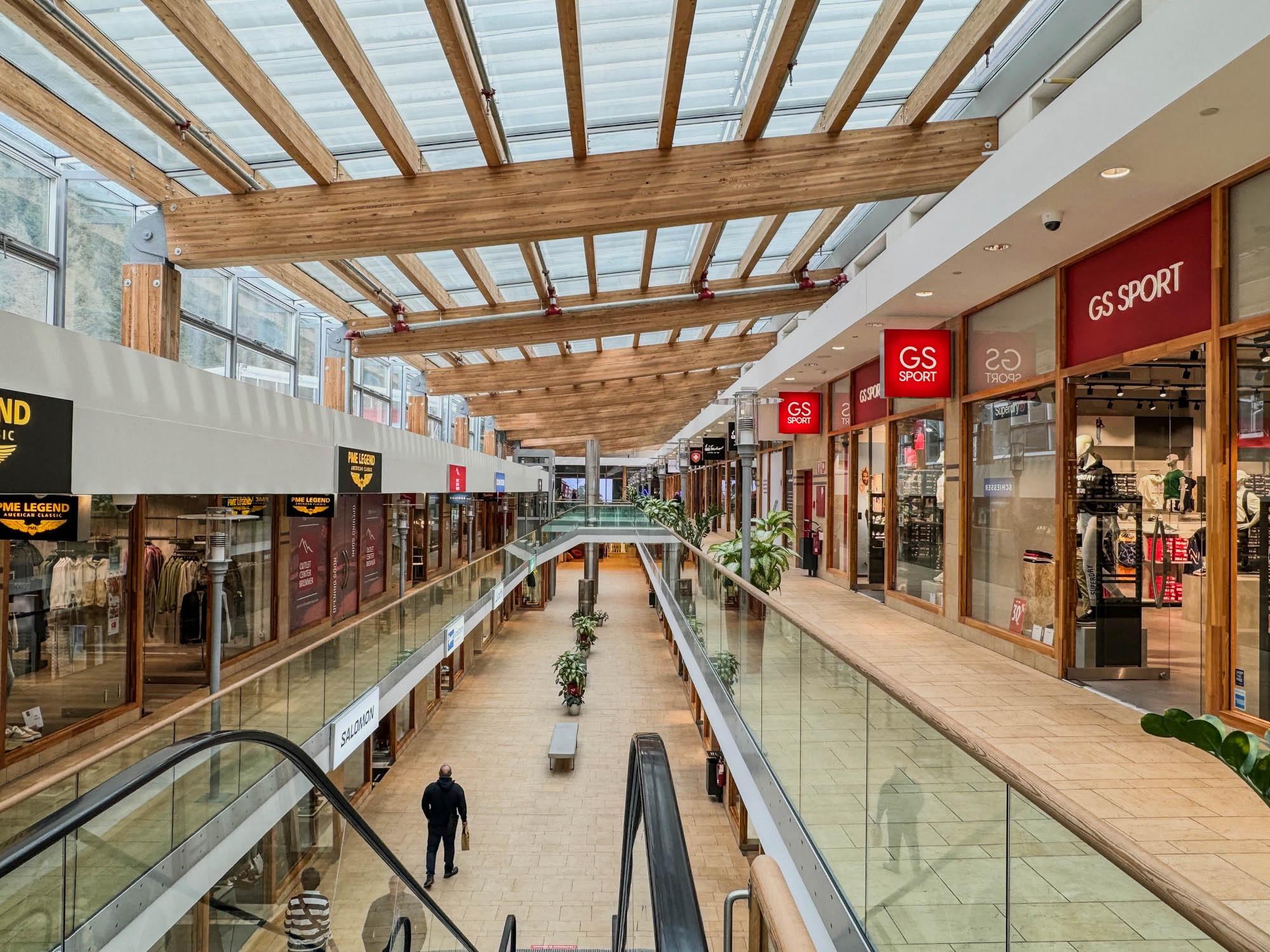


CENTER BRENNERO

Fortezza

Learn about the secrets of the fortress that never had to prove itself against "enemies": a possible gold treasure of the Banca d'Italia and an endless staircase, its number of steps has never been reliably counted.

Fortezza


From the train station to the Franzensfeste.
Fortezza (Franzensfeste) is an important transport hub in the region. The municipality takes its name from the fortress built in the town. The Brenner and Pustertal railways cross here. There are hourly connections between Lienz and Franzensfeste. The Pustertal railway meets the Drautal railway in Innichen - San Candido.
From the train station, travelers can easily reach the fortress by public transport. All the necessary information is included in the Google link.
with the ÖBB railjet on the Brenner Railway
46

History
After a construction period of five years, the Franzensfeste was inaugurated by Ferdinand I on August 18, 1838 in honor of the late Emperor Franz I. In the year 1840, the fortress was integrated into the defense system of the "German Confederation." However, due to new defense concepts and the further innovation of firearms, the complex quickly lost its strategic importance and was mainly used as an arms depot and powder magazine.
During the First World War, it only served as a powder magazine and was never directly involved in military conflicts.
with the ÖBB railjet on the Brenner Railway
47
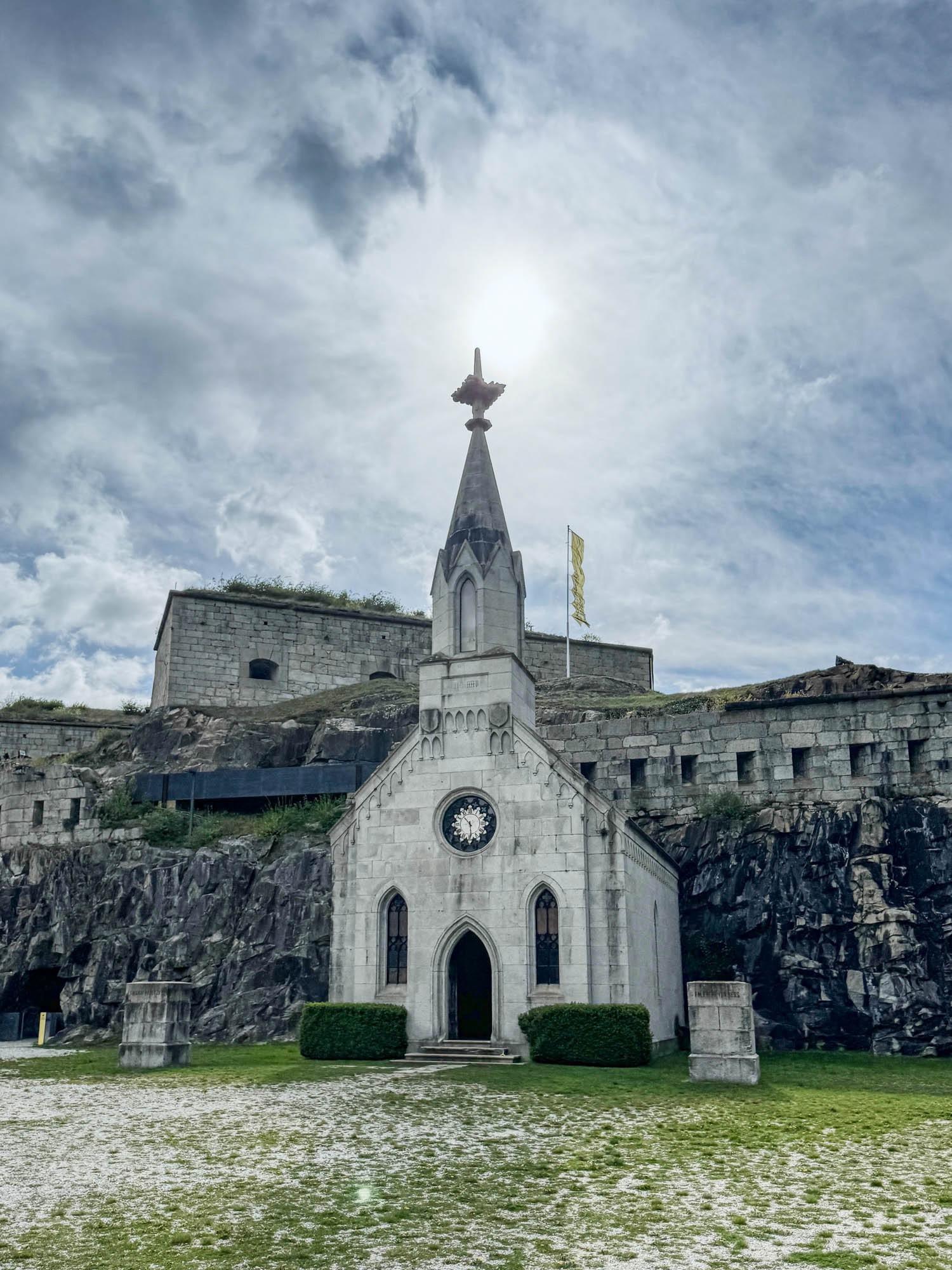 Chapel
Chapel
48
with the ÖBB railjet on the Brenner Railway
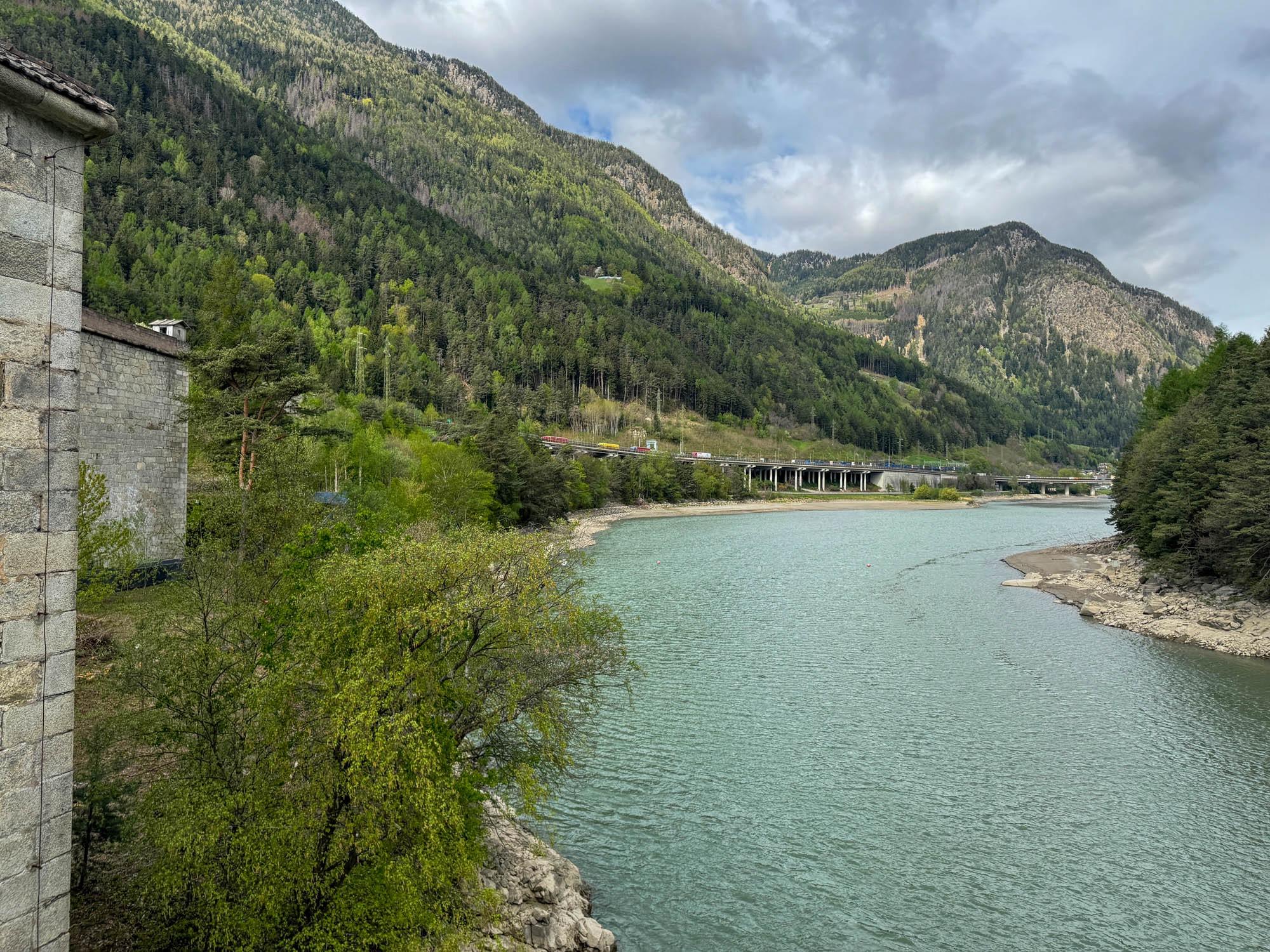
Reservoir
Between the years 1939 and 1940, the Franzensfeste reservoir was built to dam the Eisack river. Initially, the electricity generated by the dam was used to supply the Brenner railway with energy. The reservoir, which mostly belongs to the municipality of Franzensfeste, owes its name to this town. With an area of around 23 hectares and a dam wall around 65 metres high, this artificial body of water is impressive. The lake also marks the border between the Wipp and Eisack valleys.
49
with the ÖBB railjet on the Brenner Railway
 Endless staircase
Endless staircase
50
with the ÖBB railjet on the Brenner Railway
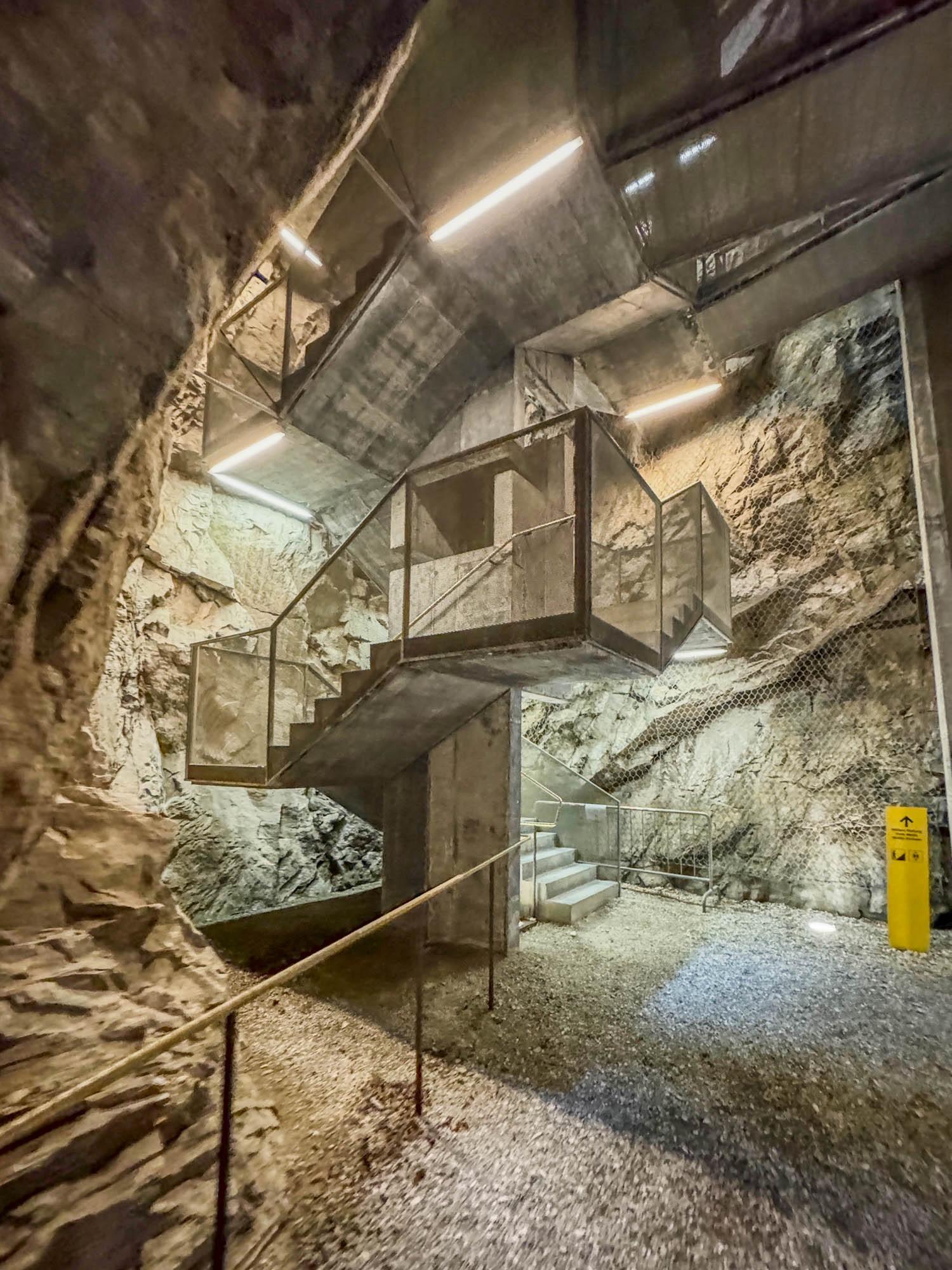 Gold myth
Gold myth
51
with the ÖBB railjet on the Brenner Railway
Brenner Base Tunnel

The Brenner Base Tunnel (BBT) is a joint construction project between the countries of Austria and Italy to build a railway tunnel for both passenger and freight traffic under the Brenner Pass.
The tunnel runs parallel to the existing Brenner railway line between Innsbruck and Franzensfeste under the main Alpine ridge. It is part of the Berlin-Palermo railway connection in the Scandinavian-Mediterranean core corridor of the EU-TEN programme.
The BBT route between Innsbruck and Franzensfeste is 55km long. Together with a large part of the already existing underground bypass of Innsbruck, the Brenner Base Tunnel would have a total length of 64km. This would make the BBT the longest underground railway tunnel in the world.
The opening was originally planned for the year 2019, but in May 2021 it was announced that the opening would not take place until 2032 at the earliest.
with the ÖBB railjet on the Brenner Railway
52

 Bressanone
Bressanone
Bressanone (Brixen) is a place with a rich history, many cultural treasures and breathtaking views of nature. Unforgettable moments are guaranteed in this vacation and relaxation paradise.



The town of Brixen lies at the foot of the picturesque and majestic Dolomite mountains and exudes a charming, medieval flair. The old town of Brixen is a winding labyrinth of cobbled streets, lined with historic buildings and idyllic squares.
Brixen is a true paradise for hikers and those seeking relaxation. Rolling hills of vineyards, green meadows and imposing mountain peaks form the perfect backdrop for a relaxing holiday. The lively culture and art scene is reflected in the galleries, museums and events in Brixen. The local cuisine spoils guests with deli-
cious South Tyrolean specialties in cosy restaurants and rustic inns.
In the cosy cafes and traditional restaurants, visitors can get to know South Tyrolean cuisine with its regional specialties such as Schlutzkrapfen, Kaiserschmarrn and Tirtlan. Not to be forgotten are the fantastic regional South Tyrolean wines that are produced in the surrounding vineyards.
with the ÖBB railjet on the Brenner Railway 54




Hofburg with the ÖBB railjet on the Brenner Railway 55
Eisack und Rienz
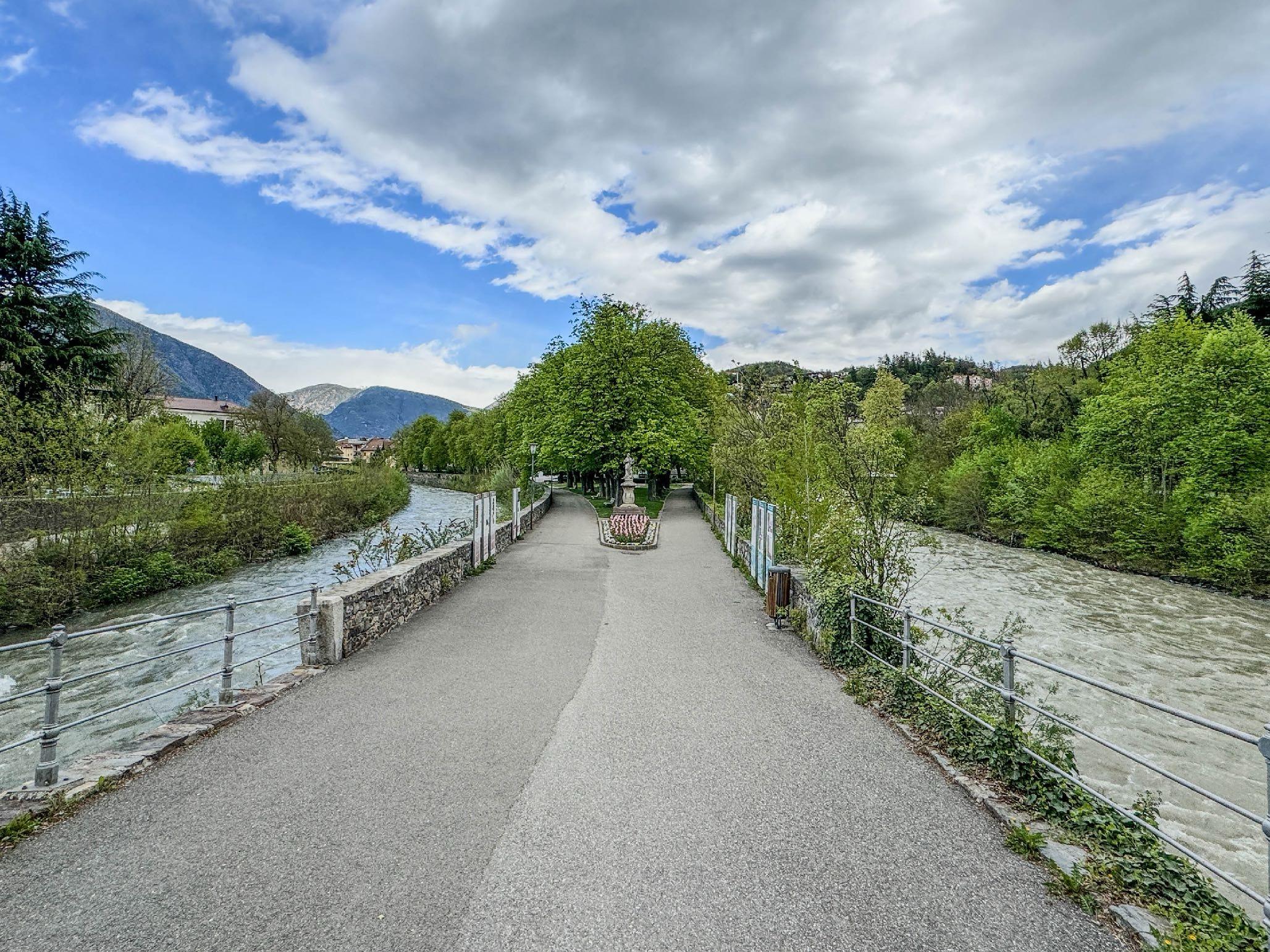


The Rappanlagen (Giardini Pubblici Rapp) were designed in 1883 as a spa garden at the confluence of the Eisack and Rienz rivers. The garden was named after the then-governor of Tyrol, Franz von Rapp. The source of the Eisack, the second longest river in South Tyrol, is at the Brenner Pass. The Rienz river has its source at the foot of the striking Drei Zinnen (Three Peaks).
Brixen has a close relationship to the water. A total of 48 drinking water fountains in the city and the surrounding area make the region an open-air water museum.
At every fountain you will find plaques that prompt you to "Refill your bottle!"
Brixen is a place rich in history, culture and natural beauty. The town and its surrounding area are a true paradise for hikers and anyone looking for pure relaxation.
This is a place full of magic where you can lose yourself in the here and now, thanks to its connection with nature and water.
with the ÖBB railjet on the Brenner Railway 56
Cathedral of Bressanone



dedicated to the Assumption of Mary and St. Cassian. Together with surrounding buildings such as the cathedral cloister, the Johannskapelle and the Frauenkirche, it forms Brixen's cathedral district.
tion of Mary was named a co-cathedral, the cathedra (the bishop's "chair") and the cathedral chapter remain in Brixen.
Thus, the Brixen Cathedral remains the most important church in the diocese. The first three bishops of Bozen-Brixen (Joseph Gargitter, Wilhelm Egger and Karl Golser) are buried here.
with the ÖBB railjet on the Brenner Railway
57

many. A distinction is made between paintings in the soft style (1390–1440) with idealized figures and motifs, the beginning
with the ÖBB railjet on the Brenner Railway

58 Cloister

 Bolzano
Bolzano
Picturesque town with a historic center. Bolzano is a cosy place for shopping and a destination for wine lovers. Promenades and many cycling and hiking trails invite you to linger.
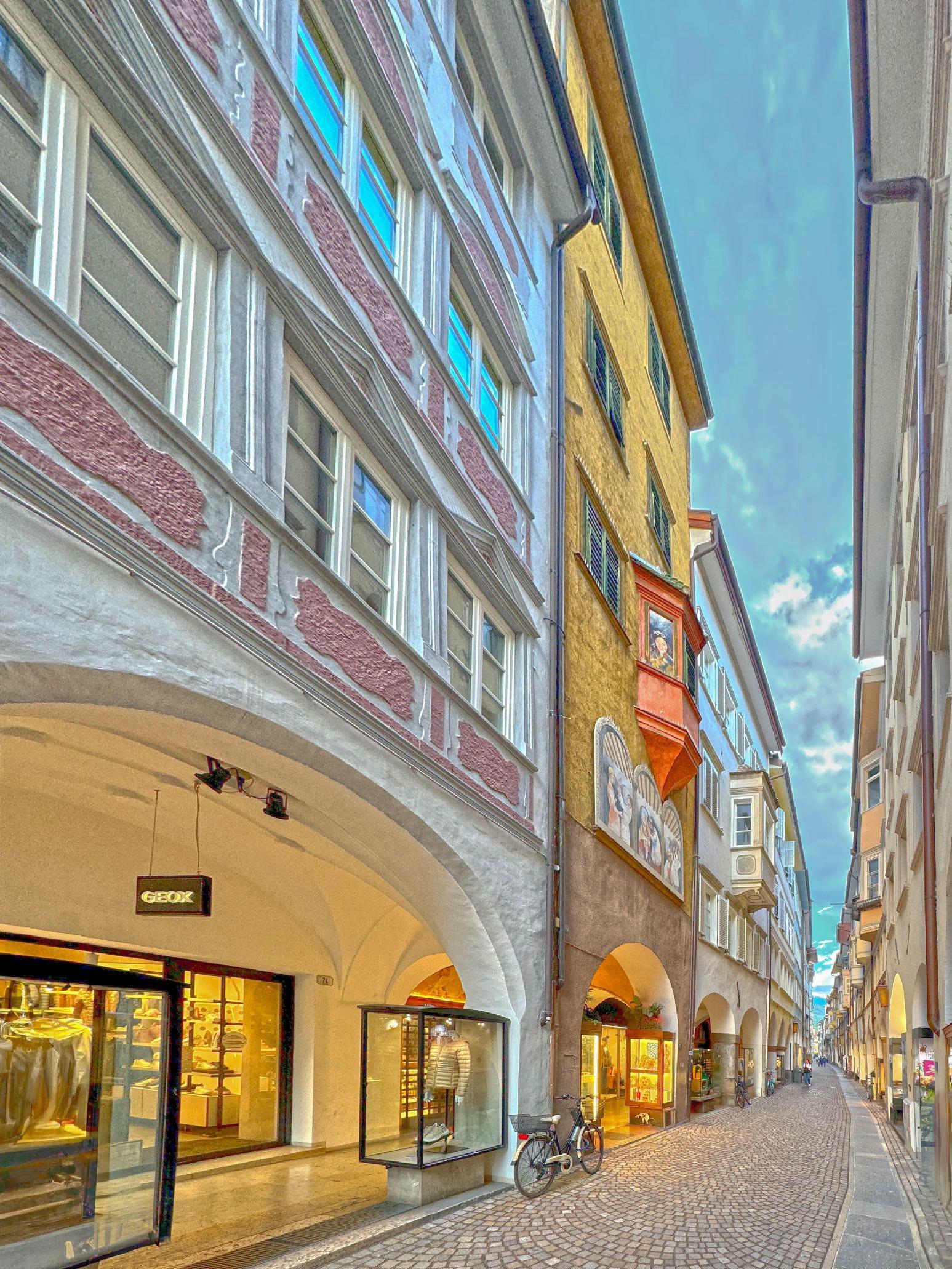
As the capital of the South Tyrol region, Bolzano is the gateway to the Dolomite Mountains. Here, the North meets the South and the Mediterranean meets the Alps. In the historic old town you can stroll leisurely through the arcades and visit the numerous shops, restaurants and bars.
More than 50 kilometres of cycling paths and beautiful hiking trails invite you to enjoy being active in and around Bolzano. With the help of the two cable cars, visitors can easily climb the surrounding mountains. The view from the mountains over the
city of Bolzano is breathtaking and a wonderful experience in any season. Visitors to Bolzano can enjoy the fresh mountain air and take in the impressive views.
Visitors to the city of Bolzano can round off a day full of outdoor activities with a visit to one of the city's cosy cafes or restaurants. Bolzano offers a perfect mixture of culture, nature and enjoyment, making it an ideal destination for anyone who wants to experience the best of a holiday in the Alps.
60
with the ÖBB railjet on the Brenner Railway
Cathedral of Bolzano
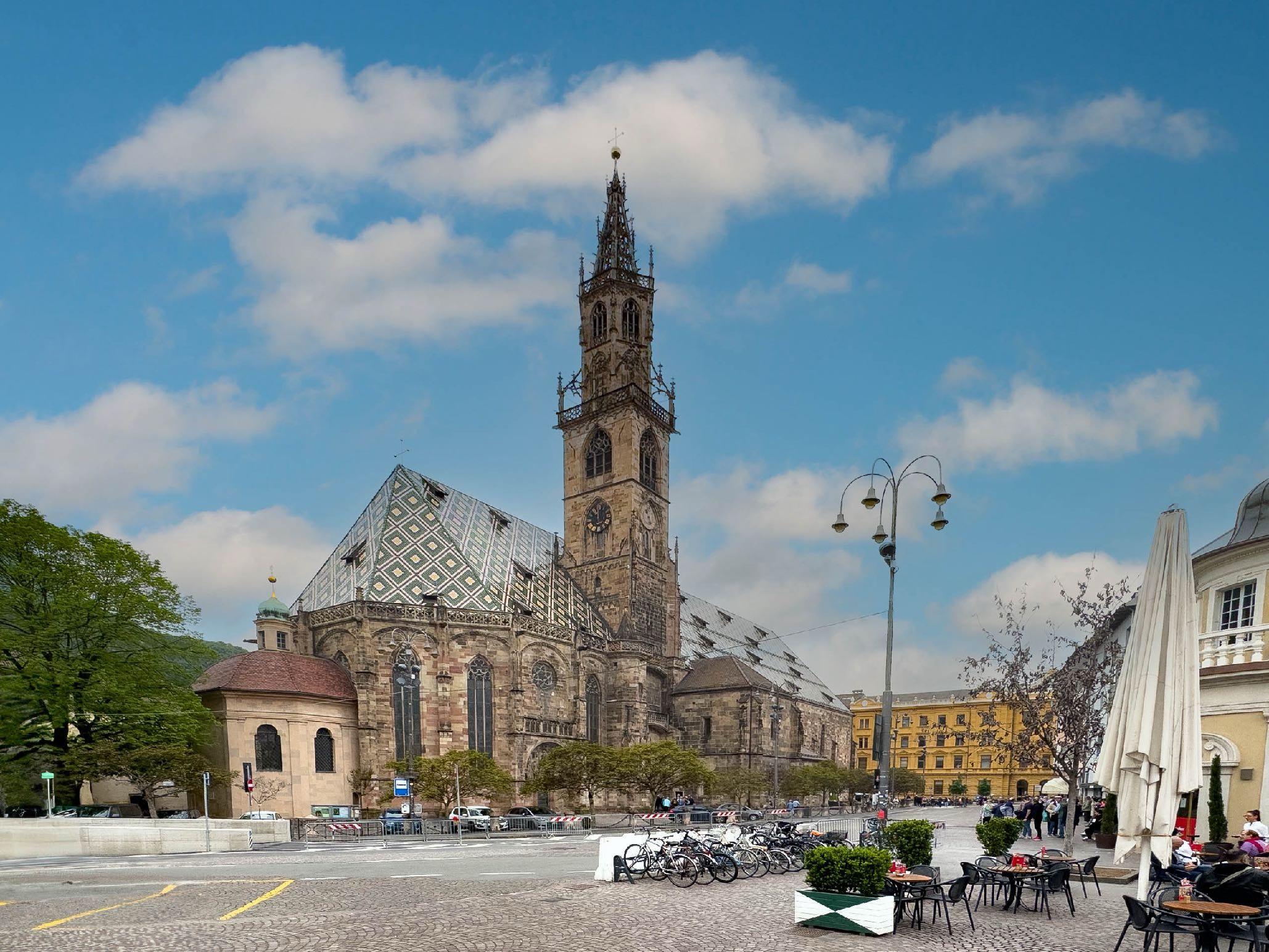


The origins of the imposing cathedral on Waltherplatz in the heart of Bolzano date back to the 5th century. An early Christian basilica once stood here. The current Cathedral of the Assumption of Mary was built on its remains. Construction in the late Gothic style began around 1300 and was only completed over two centuries later, in the year 1519, with the completion of the 65-metres-high steeple. The Cathedral of the Assumption of Mary houses numerous works of art such as the "Chattering Mother of God", the Crucifixion Fresco on the steeple wall and the Chapel of Grace. The artistically decorated gates such
as the Lion Portal in the romanesque style and the Leitacher Portal are also worth seeing. The cathedral treasury is located right next door in the old provost's office. Archduke Rainer of Austria, who died in Bolzano in 1853, is laid to rest in the crypt.
The cathedral is open Monday through Saturday from 7.30 a.m. to 6.00 p.m. and Sundays from 8.00 a.m. to 8.00 p.m.
The cathedral's treasury can be visited from Tuesday to Saturday between 10.00 a.m. and 12.30 p.m.
61
with the ÖBB railjet on the Brenner Railway




"Tree of the Millennium". joy the legendary chocolate specialties.
62 Sisi-Gingko
with the ÖBB railjet on the Brenner Railway



Ötzi, the Iceman

with the ÖBB railjet on the Brenner Railway
63

 Trento
Trento
The city of Trento, with its palaces and castles, offers countless opportunities to experience the place. It is worth to explore the city's hidden corners - an adventure for all senses.

The capital of Trentino has an eventful past. The city was founded by the Celts and later conquered by the Romans, who renamed it "Tridentum". In the year 1004, Emperor Henry II transferred secular power to the bishops. Despite various revolutions, the bishops remained in power until Napoleon's troops invaded in the year 1796. After that, the area became part of the Austro-Hungarian Empire. From that point on, technical projects began to be implemented, such as the diversion of the Adige, the construction of the Brenner railway and more modern urban development.
Trento's medieval streets and magnificent squares invite you to immerse yourself in times gone by. The city's rich history comes to life here and showcases the important role the capital of Trentino once played. Trento's numerous art treasures and historic buildings make every walk an unforgettable experience. Anyone who strolls through the narrow streets and admires the magnificent palaces feels like they have been transported back in time. Every step reveals new facets of this fascinating city, full of stories and secrets.
65
with the ÖBB railjet on the Brenner Railway
Castello del Buonconsiglio



66
with the ÖBB railjet on the Brenner Railway
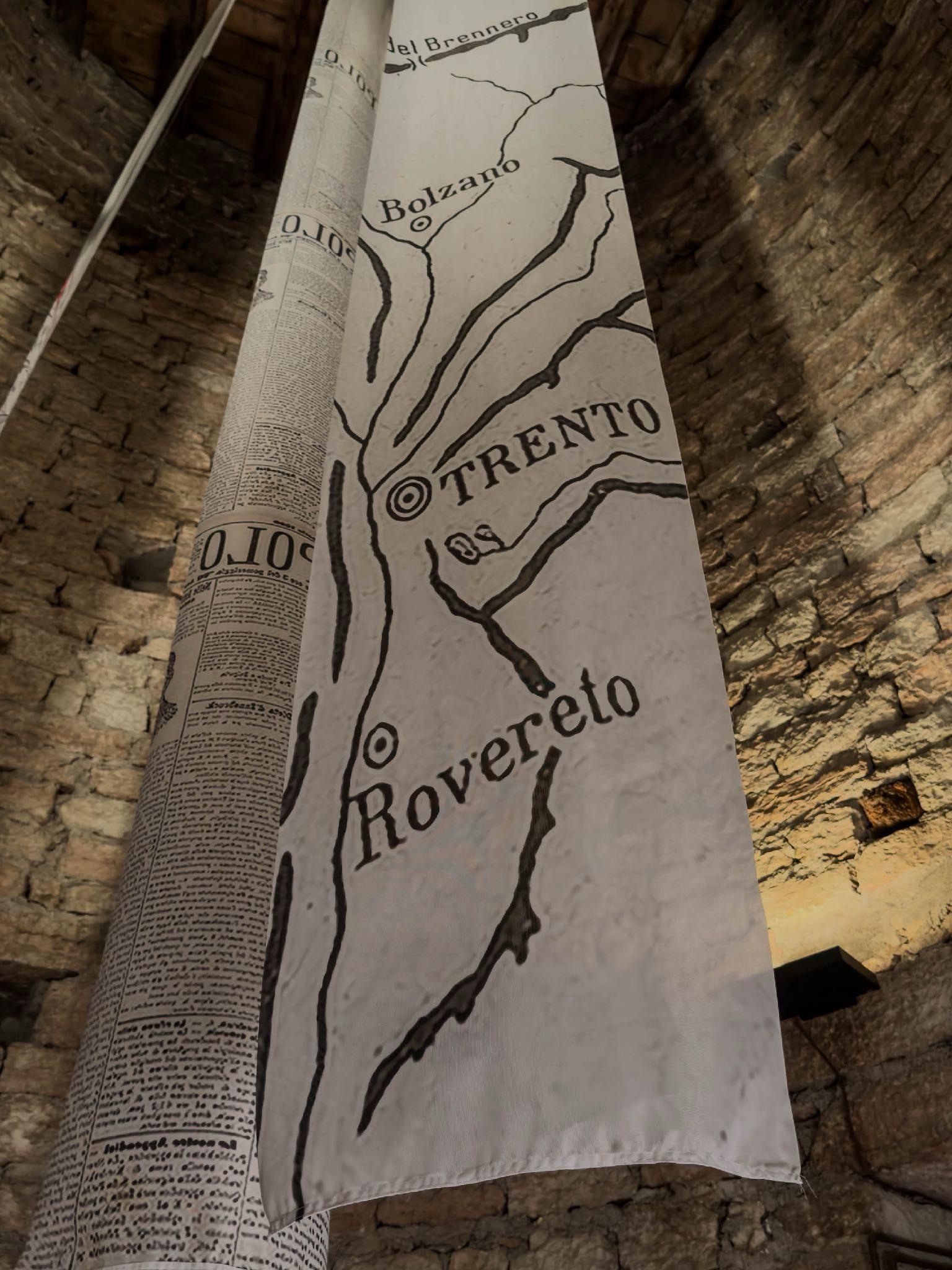
Fontana del Nettuno



68
with the ÖBB railjet on the Brenner Railway

Rovereto

The city of Rovereto is the hometown of the Futurist artist Fortunato Depero. This makes Rovereto the link between past, present and future.



Rovereto is the second largest city in the province of Trentino and impresses with its Italian small-town charm, its Venetian architecture and the diverse structures that particularly appeal to art and culture lovers.
Old palazzi and civic palaces in the Baroque and Renaissance styles bear witness to the town's economic and cultural heyday in the 17th and 18th centuries. Rovereto is only a few kilometres from Lake Garda. The imposing Castel Veneto houses a war museum.
The Peace Bell in Miravalle,is particularly well-known; it rings a hundred times every evening and commemorates the victims of war around the world.
In the course of history, the cultural capital of Trentino has been ruled by Venetians, Tyroleans, Austrians and, since 1919, Italians. The city was a hard-fought front-line city in the First World War, but has long since overcome its warlike past and is therefore today known as the "Città della Pace" (City of Peace).
70
with the ÖBB railjet on the Brenner Railway




The Museum of Modern and Contemporary Art of Trento and Rovereto (MART) presents mainly Italian works of art from the 20th and 21st centuries. The collection houses more than 15,000 works, including the most important collection of Futurist art in Italy, as well as a research center on Futurism.
Fortunato Depero is considered one of the leading representatives of Futurism in Italy and opened the first Futurist museum, the Galleria Museo Depero, in the year 1959. Due to the extensive growth, the MART was built in the year 2002 according to
the plans of the Ticino architect Mario Botta. The imposing building houses three-storey museum halls arranged around an impressive circular agora covered by a glass dome. This central location can accommodate events with up to 1,200 visitors.
The Futurist Fortunate Depora designed the small Campari soda bottles in 1932.
with the ÖBB railjet on the Brenner Railway
MART
71
Museum of War History



The Museum of Italian War History (Museo Storico Italiano della Guerra) provides a vivid depiction of the various battles and strategies that took place in the region during World War I. Visitors can gain insight into what happened before 1919 through original artifacts, documents and interactive displays. One can really feel the tension and horror of the war that once swept through this picturesque town in the Adige Valley. The exhibition also shows the impact of the war on the population and their daily life in the town.
In addition to the military aspects, personal stories of soldiers and civilians are presented at the museum to give visitors a comprehensive picture of the time period. This shows how profound the First World War was for the people of this region and the long-term impact it had on their lives.
A visit to this museum is therefore not only informative but also emotionally touching.
72
with the ÖBB railjet on the Brenner Railway
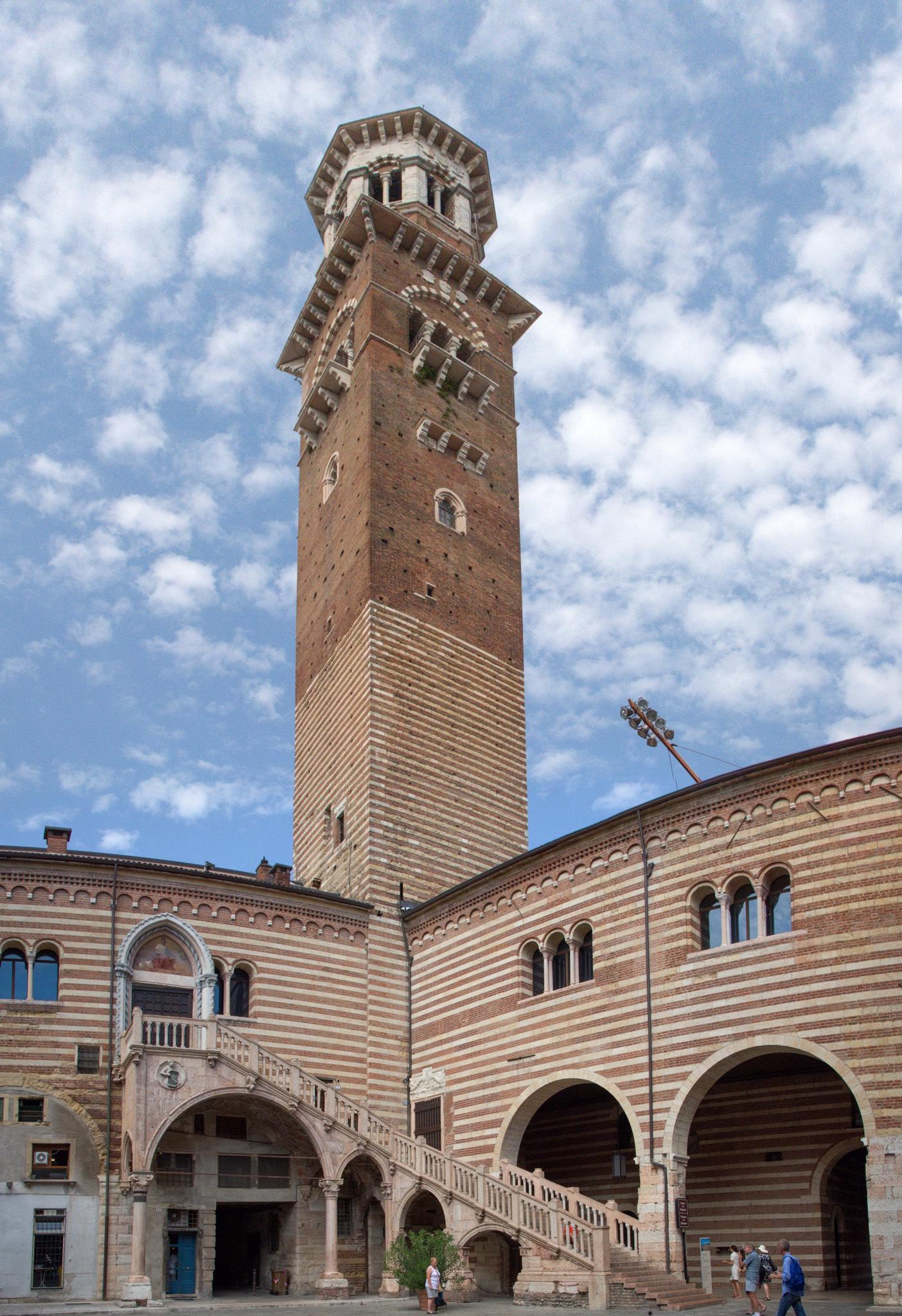
 Verona
Verona
Verona is not only home to the most famous lovers in history - Romeo and Juliet - but also offers a multitude of other secrets and attractions.



Verona is one of the most beautiful cities in Italy, thanks to its unique buildings and monuments. Visitors entering through the gates of Piazza Brà are left speechless.
The huge square is surrounded by numerous restaurants and street cafes to the west. The enormous Verona Arena to the northeast is impossible to miss. Tourists stream along Via Giuseppe Mazzini with its shops and restaurants to Via Cappello. It is difficult to choose what to visit in the city centre with its many worthy destinations. To visit Juliet's balcony, Romeo's
house, the magnificent palaces and the Scaliger tombs, it is advisable to spend a few days in Verona. The magnificent churches and the Castelvecchio should not be forgotten, either.
Since Verona is located only about 30 km to the southern end of Lake Garda (easily accessible by bus or train), it is a popular tourist destination. The old town with the ancient amphitheatre, the Arena, was added to the list of UNESCO World Heritage Sites in the year 2000. with the ÖBB railjet on
74
the Brenner Railway



A separate travel guide is available for the city of Verona (in Italian). As with all ÖBB e-books, there is also an edition for Apple and one in PDF format. Since the introduction of the new Nightjets and Railjets, this travel guide has also been accessible via railnet.
Railnet is the entertainment platform in the new generation of ÖBB Nightjets and on all ÖBB Railjet trains.
with the ÖBB railjet on the Brenner Railway
75
Arena di Verona



The Arena di Verona is often referred to as "The most Italian place on earth". A visit to an opera in the arena is an unforgettable experience. The 2024 opera season starts on June 7th and ends on September 7th.
The event begins with a special gala under the direction of Riccardo Muti, 150 musicians and over 300 choir artists. The amphitheatre was built around the year 30 AD and initially measured 152 metres by 113 metres. Today it measures 138 metres by 109 metrs and is exactly 24.1 metres high. The Arena di Ve-
rona is the third largest intact ancient amphitheatre. Only the Colosseum in Rome and the Arena of Capua are larger. The 45 rows of seats can accommodate 20,000 spectators. On August 10, 1913, the opera Aida was performed to mark Giuseppe Verdi's 100th birthday. Thanks to the excellent acoustics, the arena quickly established itself as a popular concert venue.
Opera performances and rock concerts take place at the arena from June to September, while many international singers and musicians come to perform in spring and autumn.
with the ÖBB railjet on the Brenner Railway 76



The Scaliger Tombs in Verona commemorate the burial place of the Scaliger family, who ruled the city from the yar 1260 until 1387. Most of the tombs are located in a family cemetery next to the church of Santa Maria Antica, surrounded by wrought iron railings. Only the tomb of Cangrande I is integrated into the facade of the church.
The remaining monuments consist of stone sarcophagi, some in large Gothic shrines with equestrian statues. These stand separately next to the church in a fenced-in area. The 14th centu-
Scaliger Tombs

ry tombs with equestrian statues are among the oldest monumental representations of their kind. The tombs are richly decorated and testify to the power and wealth of the Scaliger family. Each of them tells its own story, from wars and triumphs to family dramas and political intrigues. The artistic design of the monuments shows the influence of the Gothic style and gives the tombs a majestic aura. Visitors can use the inscriptions and reliefs to get an idea of the life and work of the Scaliger rulers and delve deeply into the history of Verona.
77
with the ÖBB railjet on the Brenner Railway



Juliet Capuleti's parents' house is a must-see. It was built in the 13th century and was owned by the dal Capello family until the end of the 19th century. In the year 1935, the city of Verona acquired this dilapidated property. In order to further boost tourism, they came up with the idea of bringing the myth of Romeo and Juliet to life. The most famous balcony in world literature is actually an ancient sarcophagus that came from the catacombs of the arena. The architect Antonio Avena, who was commissioned to renovate it, created a romantic atmosphere.
Julia's Balcony

As you enter the property through an archway, you will notice an engraved hat - the dal Capello family crest. The courtyard leads to the legendary balcony on the first floor, where Juliet supposedly promised Romeo her eternal love. In the courtyard you will find a bronze statue of Juliet, created by the sculptor Nereo Constantini.
Visitors touch the figure's right breast in hopes of eternal love and happiness. In the year 2014, the original figure was replaced by a copy in order to protect the original monument.
with the ÖBB railjet on the Brenner Railway
78
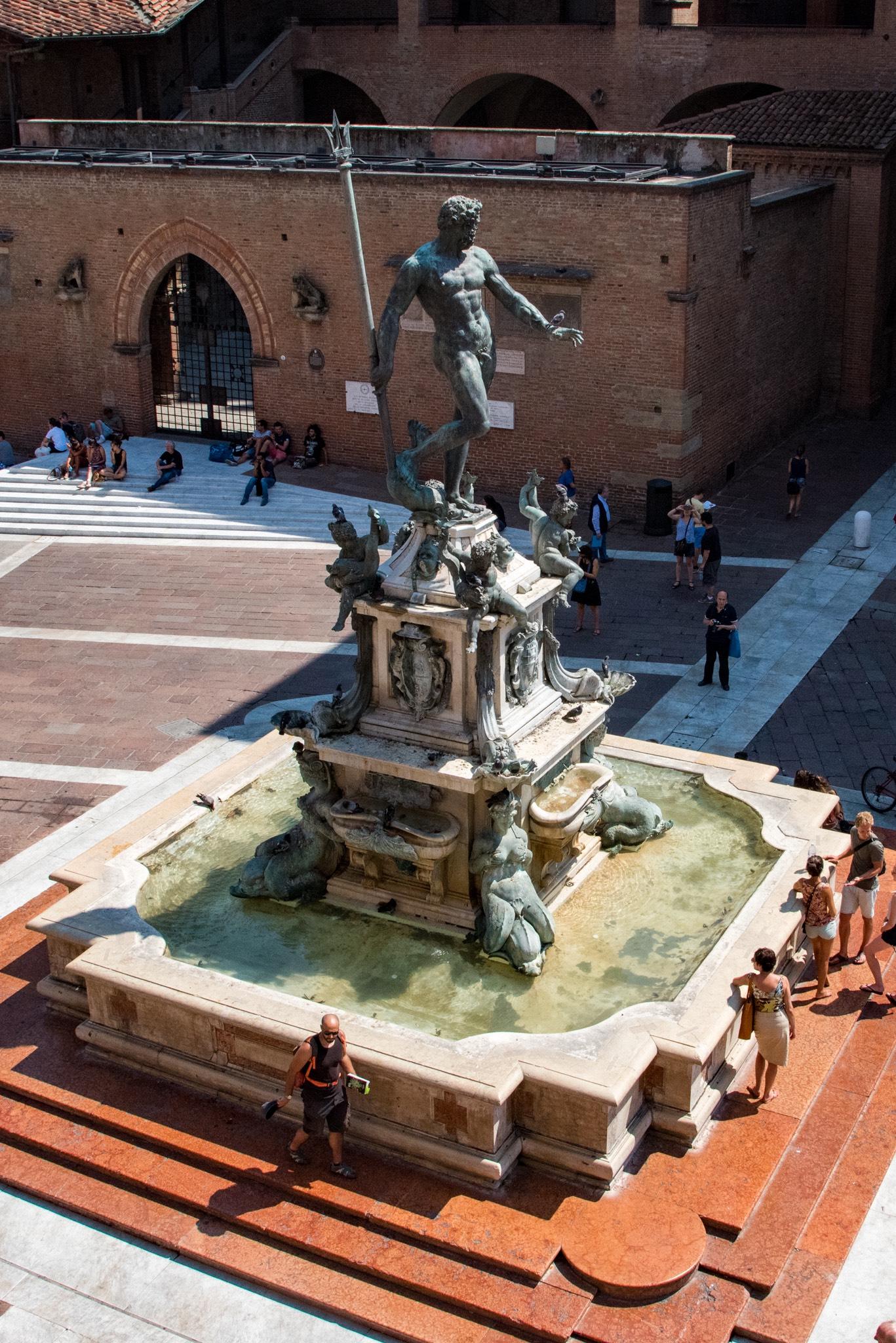
Bologna

Bologna, the city of arcades, is known as a "city of pleasure" and is definitely a must-see. The surrounding area of Bologna is home to the jewels of the Italian automotive industry.



with the ÖBB railjet on the Brenner Railway 80



A separate travel guide is available for the city of Bologna (in Italian). As with all ÖBB e-books, there is also an edition for Apple and one in PDF format. Since the introduction of the new Nightjets and Railjets, this travel guide has also been accessible via railnet.
Railnet is the entertainment platform in the new generation of ÖBB Nightjets and on all ÖBB Railjet trains.
with the ÖBB railjet
the
81
on
Brenner Railway
Garisenda & Asinelli



82
with the ÖBB railjet on the Brenner Railway
Anatomical Theatre
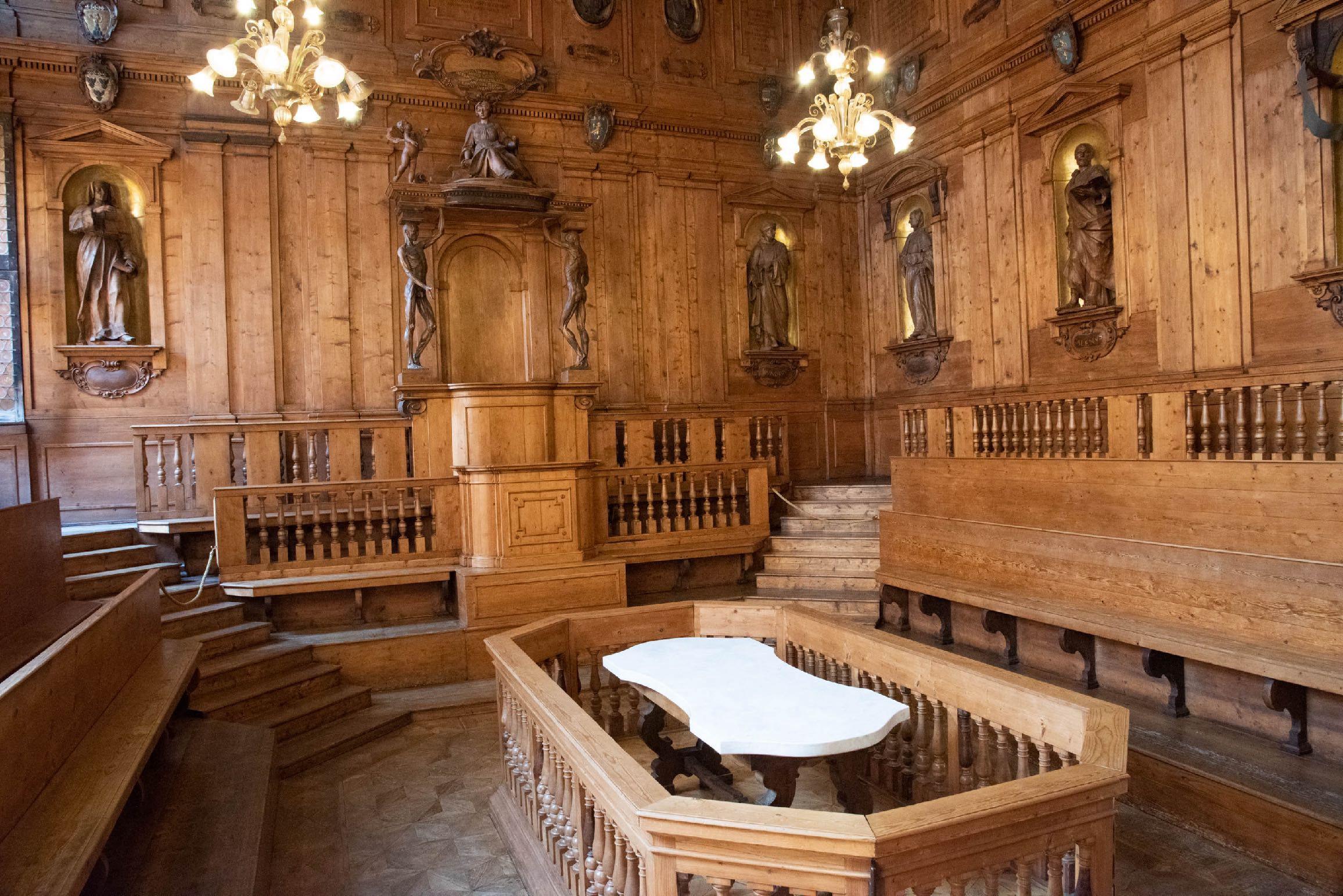


Completed in 1563, the Palazzo dell’Archiginnasio was the first permanent site of the University of Bologna, one of the oldest universities in the world, founded in the 11th century.
Today it houses the Biblioteca Comunale dell'Archiginnasio, the municipal library, which is not open to visitors. On the ground floor, an impressive fresco with 6,000 coats of arms of the students and inscriptions in honor of the professors decorates the vault.
The Anatomical Theatre on the upper floor was built in the year 1637 according to a design by Antonio Levanti. It served as an amphitheatre for anatomical dissections, was paneled with fir wood and decorated with a coffered ceiling and statues.
In the past, medical students used the Anatomical Theatre for their anatomical lectures and dissections to deepen their knowledge of human anatomy. The Palazzo is open to visitors from Monday through Saturday and is closed on Sundays.
83
with the ÖBB railjet on the Brenner Railway
Piazza del Nettuno



The imposing Nettuno Fountain stands in the centre of Piazza del Neptune. It was created between the years 1563 and 1566 by the Flemish sculptor Giambologna. The statue is made marble and bronze and based on a design by Tommaso Laureti.
The fountain symbolizes the power of the Pope. Just as Neptune controls the water, the Pope controls the world. Four angels at the feet of the God represent the rivers Ganges, Nile, Amazon and Danube, the continents known at that time.
On the east side of the square is the Palazzo Re Enzo, named after King Enzio of Sardinia, who was imprisoned here from the year 1249 until the end of his life.
The square opens into the Piazza Maggiore to the south and to the impressive Palazzo d'Accursio to the west, which is today's town hall. In the arcade of the Palazzo del Podestà you can relax in a cafe and admire the Basilica di San Petronio, which is located to the south.
with the ÖBB railjet on the Brenner Railway 84
Finestra sul Canale



A few steps past the intersection of Via dell'Indipendenza and Via Augusto Righi is a corner of the city known as "Little Venice". On Via Piella, visitors will find an inconspicuous window that offers a view of the Canale delle Moline.
Between the buildings you can see one of the few waterways that were not paved between the early 20th century and the post-war period: The Canale delle Moline is a continuation of the Canale di Reno, which was completely built over from the Giardino Giacomo Bulgarelli onwards.
A dense network of water channels and locks runs beneath the city. The network has provided energy for machines in silk weaving mills or grain mills and also served as trade routes since the Middle Ages. To create the canals, the water of two rivers was diverted at great expense. Two further views of the canals can be seen at 45 Via Guglielmo Oberdan and 4 Via Malcontenti.
85
with the ÖBB railjet on the Brenner Railway
Arcades of Bologna

The arcades of Bologna were added to the list of UNESCO World Heritage Sites in the year 2021.
The characteristic arcades adorne Bologna's cityscape and extend over a total length of 38 kilometres. The arcades were originally built to accommodate the city's rapid population growth. The construction of the arcades made it possible to extend the upper floors of buildings to create new living spaces.
A lively commercial life developed in the arcades. Today, visitors will find numerous restaurants and cafes there.
The world's longest arcade leads to the Santuario della Madonna di San Luca pilgrimage church. The church is located on the Guardia hill above the city and offers a breathtaking view over the Po Valley. This arcade is about four kilometres long.
86
with the ÖBB railjet on the Brenner Railway

Railjet 360°



with the ÖBB railjet on the Brenner Railway 88
All photos and 360° tours at www.oebb360.at
Economy Class


with the ÖBB railjet on the Brenner Railway 89
All photos and 360° tours at www.oebb360.at
Family Zone


with the ÖBB railjet on the Brenner Railway 90 First Class All photos and 360° tours at www.oebb360.at


with the ÖBB railjet on the Brenner Railway 91 Business
All photos and 360° tours at www.oebb360.at
Class
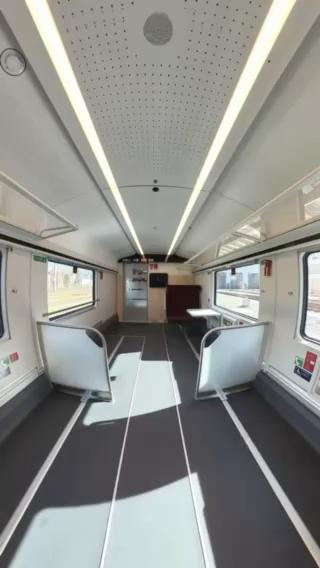

with the ÖBB railjet on the Brenner Railway 92 Barrier-free All photos and 360° tours at www.oebb360.at
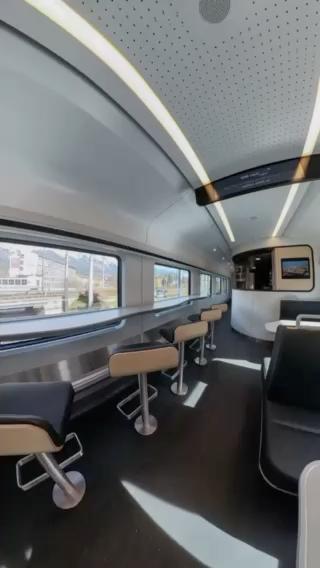

with the ÖBB railjet on the Brenner Railway 93 Restaurant All photos and 360° tours at www.oebb360.at


with the ÖBB railjet on the Brenner Railway 94
tours
Snack Zone All photos and 360°
at www.oebb360.at
Steering cabin


with the ÖBB railjet on the Brenner Railway 95
All photos and 360° tours at www.oebb360.at

Imprint


The team
This e-book was made possible through the kind support of the regional tourist offices and the ÖBB. English version: Katie Lang References
Text, videos and photos by Rudolf J. Strutz unless otherwise stated. Timetables and travel information: ÖBB
Copyright
This book was licensed under the Creative Commons License. Conditions of use: attribution, non-commercial, no editing and distribution under the same conditions only as a complete work! The use of individual photos and text is not permitted. This eBook is available free of charge.
Links



Imprint
Book your trip online or view the current timetable online and directly on your mobile phone – all this and more is offered on the new ÖBB booking app, which is simple and convenient to use.
SCOTTY mobile shows the timetables for all public transport and helps you plan your travel route as best as possible. There is also a special version for the iPad available in the App Store.
AuVi Photos & eBooks – Rudolf Strutz
Hasengasse 33/25
1100 Wien


All links provided are current at the time of publication of this e-book. Links to tickets usually lead directly to the exhibition location. For tickets and timetables, local public transportation services are linked. For tours, links are provided to the Smart-Guide services.
Logos and company names
All logos and company names are used for information purposes only; any use outside of this e-book must be approved by the copyright holders.
Railnet
The travel guides are also available free of charge on the online portal of ÖBB railnet all railjet , nightjet and cityjet




E-Mail: ebooks@oebb-ebooks.at Social Media
go-there.org/Ticket-Apple
go-there.org/Ticket-Google
go-there.org/Scotty-Apple
go-there.org/Scotty-Google
with the ÖBB railjet on the Brenner Railway 97 RJ01_EN_Brenner © 2024
Facebook: go-there.org/oebb-ebooks Instagram: instagram.com/rsvienna/ Internet:oebb-ebooks.at













































 Kufstein
Kufstein





























 Chapel
Chapel

 Endless staircase
Endless staircase
 Gold myth
Gold myth


 Bressanone
Bressanone






 Bolzano
Bolzano





 Trento
Trento










 Verona
Verona
































